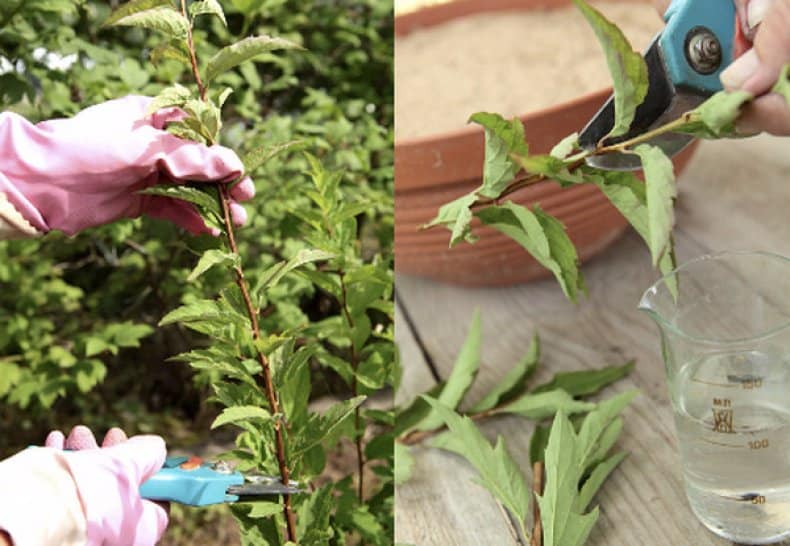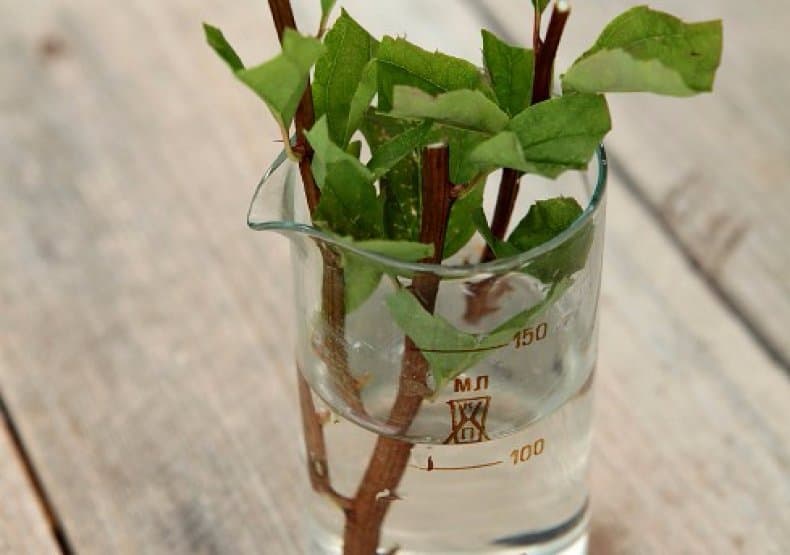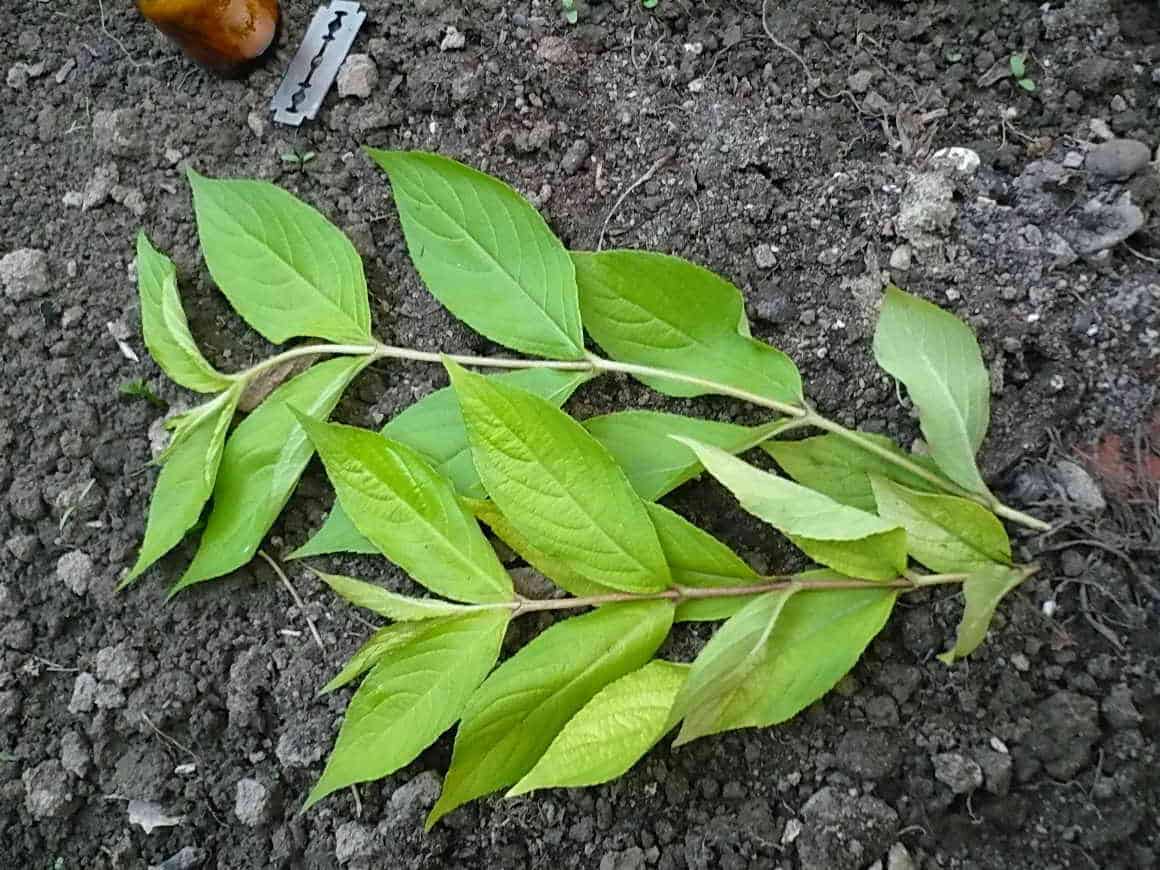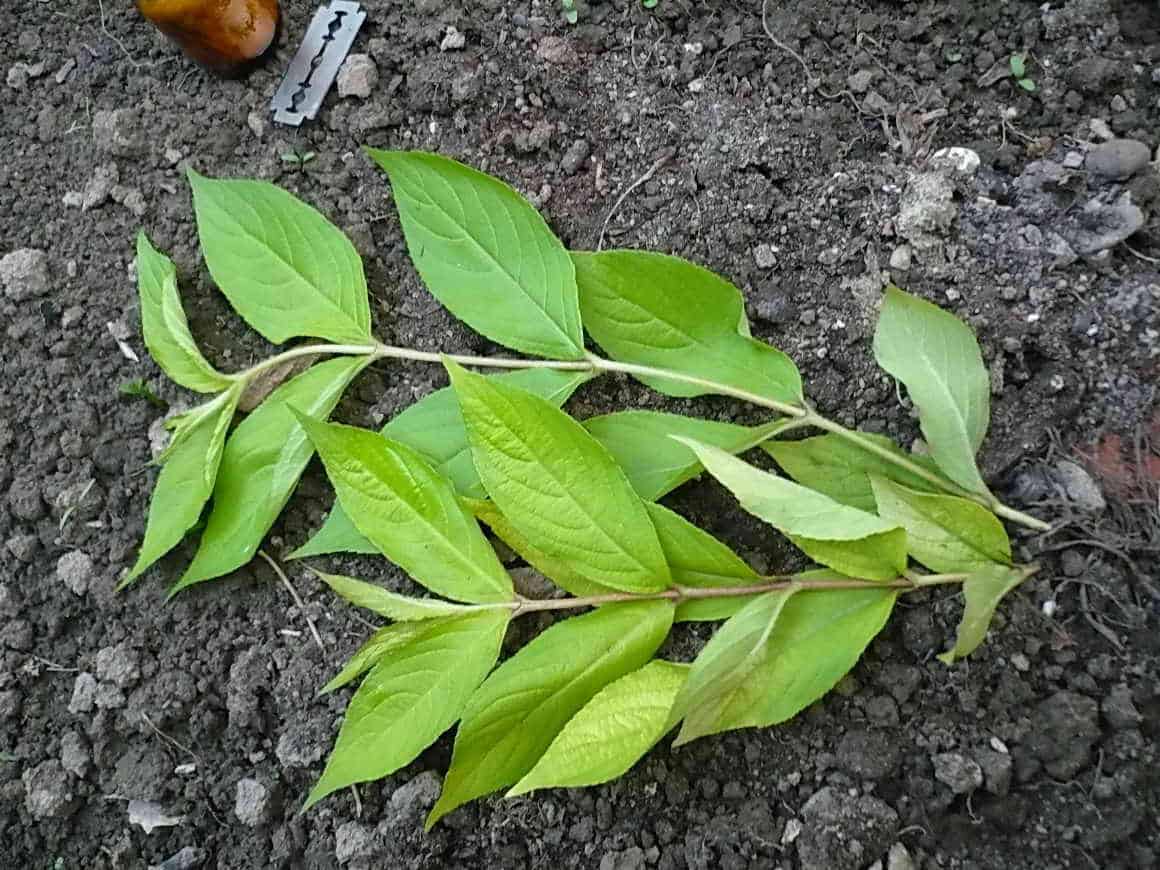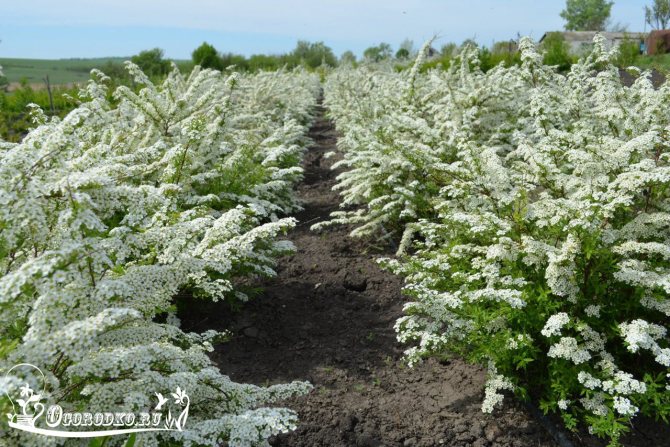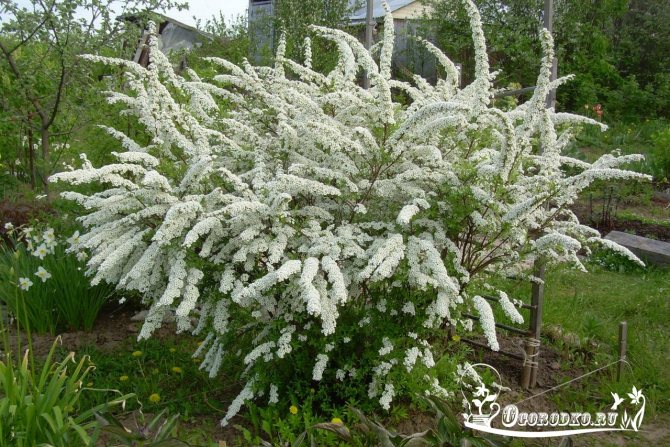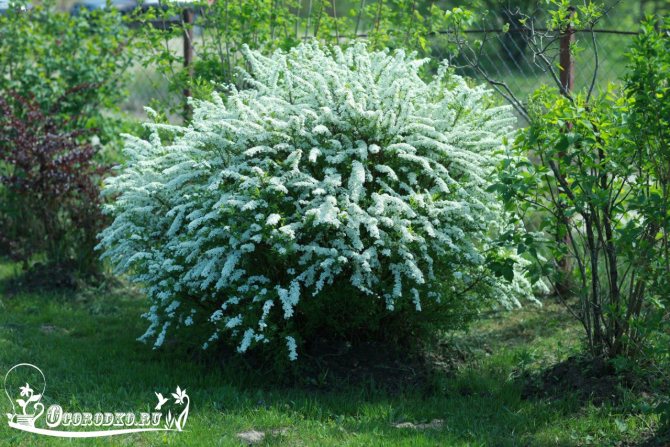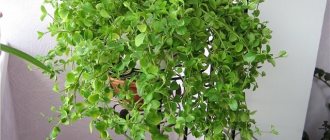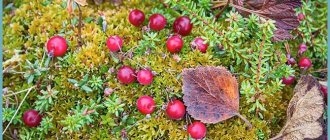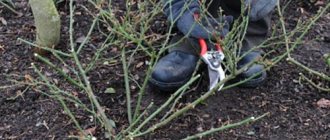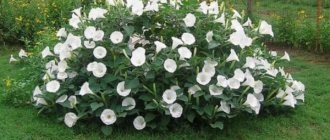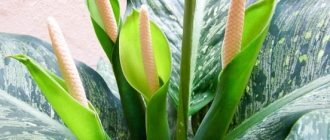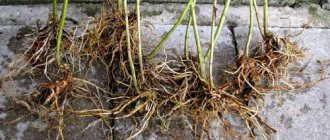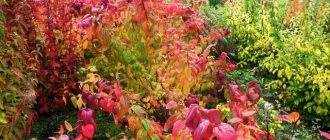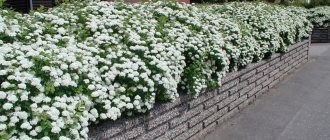Spirea - the queen of gardens
Spirea is a decoration of any garden!

There are a great many spireas. They are valued for their abundant and long flowering and amazing unpretentiousness. Even a novice gardener can grow spirea. Due to the huge variety of species, it is easy to choose a plant for any, even the most demanding taste. All spireas are deciduous shrubs, their flowers are rather small, but very numerous. They resemble miniature cherry blossoms. Depending on the variety, they are white, cream, pink, raspberry. Small and graceful foliage, too, varies widely in color and shape. The structure and height of the bush - from low, compact bushes to two-meter voluminous bushes with a drooping crown. By the timing of flowering, spireas can be divided into two groups: blooming in spring and blooming in summer. Plants of the first group usually have white flowers and bloom in the spring on the shoots of the previous year. Plants of the second group have brightly colored flowers and bloom in the summer on the shoots of the current year.
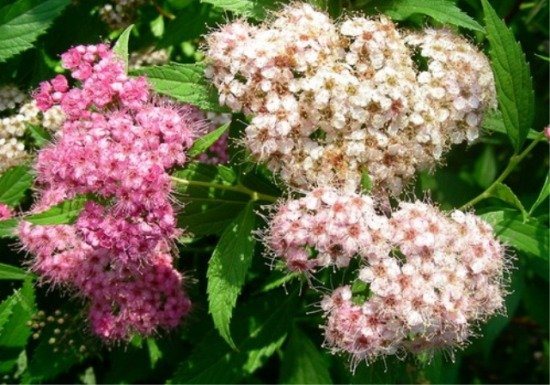

Planting spirea
Planting spirea is best done in autumn, after leaf fall or in spring before bud break. Cut too long and damaged roots of the seedling with a sharp pruner, making sure that this cut is even, without milling. We also shorten the branches of the seedling by 1/3. We prepare the planting hole in accordance with the size of the root system of the seedling. The roots should be located in the hole freely, not rest against its edges and bottom. It is believed that the planting hole should be twice the size of the root system. They fill it with turf, peat and sand in equal proportions. The root collar should be at ground level. After planting, we crush the earth and make a depression for irrigation. Of course, we water.


Reproduction of spirea
Spirea can be propagated by cuttings, layering, dividing the bush. The easiest way is layering. In the spring, choose a semi-lignified branch, bend it to the ground and put it in a previously made depression (groove). Then cover the branch in the groove with earth and fix it with a stone. The rock must be heavy enough to hold the branch securely. Throughout the summer, we regularly moisten the soil under the stone (do not lift the stone, water flows under the lying stone). Under the stone, the ground stays moist longer, and this is what is needed for the formation of the root system.
Reproduction of spirea by dividing the bush
By dividing the bush, young spireas are propagated, usually at the age of 3-4 years. You can also divide more mature spirea bushes. But this is rather inconvenient: a large earthen lump is formed on dense roots, which is difficult to dig out and wash.
/ u> The timing of the reproduction of the spirea by dividing the bush Spirea is unpretentious, it will well tolerate the division of the bush at any time from spring to autumn. The main thing is to choose the moment so that the weather after planting the parcels remains cloudy for at least a week, if you had to urgently divide the bush in the summer.
If it is not possible to water the plantings often, it is better to propagate the spirea by division in late August - early September. The soil is warmed up, and the roots grow well, and the air becomes cool and humid - the plants do not lose a lot of water for evaporation.
Dividing technique Dig up the bush, capturing about 60% of the crown projection.It's okay if you have to chop off several roots that go far to the sides. Wash the roots. Young plants, in order to wash off the soil from the roots, it is convenient to simply put them in a bucket or basin of water for an hour. Damp earth is easily washed off. Spread out the roots if possible.
You can divide the spirea bush and together with an earthen lump, without washing. But in plants that were planted from containers at one time, the roots sometimes twist so that when dividing "blindly" you run the risk of leaving half of the bush almost without roots.
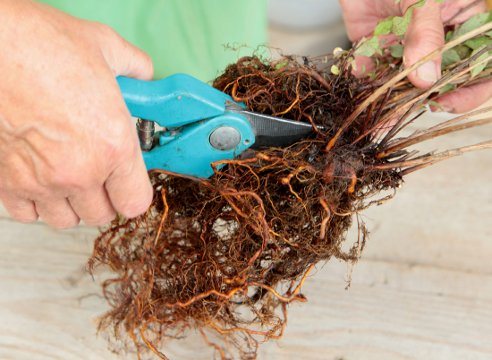

Cut the bush with pruning shears into 2-3 pieces. Each section should have at least 2-3 strong shoots and a good root lobe.


It is desirable that the divisions turn out to be more or less equivalent.
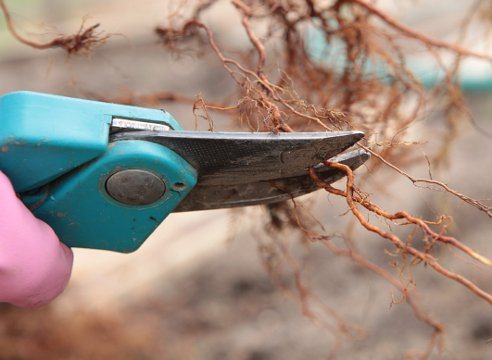

Trim the roots: update the soaked cuts (where they are clearly visible), shorten the long cord-like roots to match the length of the others. After planting, they will begin to branch intensively, providing the plant with survival.
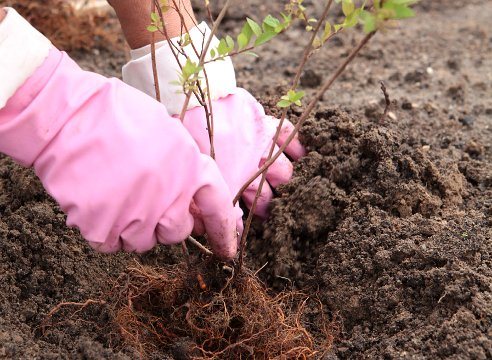

Dig a hole for planting the cut and put a mound in the middle of the hole. Place the divider on a mound and distribute the roots so that they are directed more or less evenly in different directions.
Fill the hole and water thoroughly in several steps. In hot dry weather, spirea should be watered at least every other day, in rainy and cloudy weather - once a week. Spireas, divided in late summer and early September, take root more easily. Even if the weather is hot during the day, fog is gathering in the evening. And high humidity in warm soil promotes rooting of plants. Spirea care
Spirea care will not cause much trouble. Despite all their external attractiveness, spireas are quite unpretentious and grow and bloom well under the most ordinary conditions - loose fertile soil, good illumination, no stagnant water, 3-time fertilization per season with a complex of mineral fertilizers and a winter shelter for young specimens or for especially delicate varieties. The only subtlety when growing spirea is proper pruning.


Spirea pruning
Spirits are pruned depending on the timing of flowering. Plants blooming in spring are pruned after flowering, and those blooming in summer are pruned in spring. Some types of spirits grow and age rapidly. You can rejuvenate the bush by pruning it on a stump, or you can only remove old, dry branches. I prefer to use the second method, it’s a pity to cut the bush almost to the root.
Watering and feeding
It is better to cover a shrub planted in autumn, so it will be easier for it to endure the harsh winter. If planting in spring, be sure to water the seedling regularly throughout the summer during dry periods. Let the plant grow strong. On poor soils, they are fed with spirea in early spring. If the soil is fertile enough, you can do without top dressing. In drought they water, especially in need of watering spireas blooming in summer. Spring flowering plants are more tolerant of moisture deficiency (with the exception of young seedlings). After watering, it is advisable to mulch the soil under the plant, this will allow it to retain moisture longer.
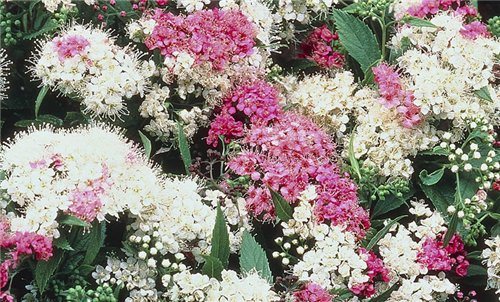

Diseases and pests
Unfortunately, pests also love spirea. True, a small amount.
Reproduction of spirea by cuttings in spring and summer
The good news for those who are just about to purchase a spirea is that this beautiful shrub is easily propagated by cuttings. I know for sure that the survival rate is almost 100%, because I repeatedly rooted the branches of my plant in order to get new specimens.
Spirea is an ornamental shrub that, being in bloom, will not leave anyone indifferent. Snow-white fountains of the Wangutta variety, lush caps of Japanese spirea decorate the gardens and fit organically into park ensembles. And in fact, they are the highlight of any landscape.
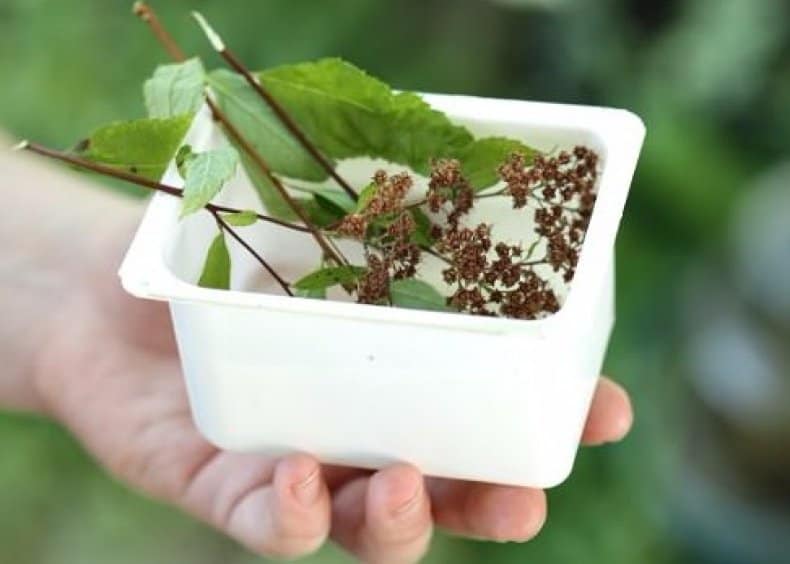

The advantages of this plant include:
- undemanding to soil and care;
- frost resistance;
- good survival rate;
- rapid growth;
- immunity to disease;
- easy reproduction.
The last point includes the seed method and the layering method, dividing the bush and grafting. Most often, gardeners propagate spirea by cuttings, because this is how all the specific characteristics of the plant are preserved. Cut off the branches from the tree you like, and get an exact copy of the mother bush.


How to divide correctly
In order to plant the spirea:
- Dig the roots of the bush from the ground, observing the diameter of the hole at least 60% of the crown span.
- If you find that several rhizomes go beyond the boundaries of the shoots, you can chop them off.
- Immerse the root system in a large container of water for at least 1 hour, after which the soil will get wet and move away, or carefully remove the rest of the soil with your hands without soaking.
- Gently untangle the soaked roots, being careful not to damage.
- Take a sharp, disinfected pruner, cut the bush into no more than 3 approximately equal parts. Leave at least 2 strong branches and a large tuft of roots for each of them.
- On each cut plant, trim the roots, remove dried or decayed ones, and re-cut the cuts.


If you divide the roots without washing away the soil, uneven parts can result, and one of the new bushes will be weakened by their almost complete absence.
Spirea cuttings
Several cuttings can be obtained from one plant at once. It is convenient and cheap if you need, for example, to prepare material for planting hedges. Branches are cut specifically for propagation, or specimens obtained as a result of formative or sanitary pruning are used.
The deciduous spirea shrub tolerates pruning well, resulting in a more attractive appearance.
Advice! We carry out pruning work in cloudy weather or after rain. We also choose the sharpest pruner to cut the branch in one step.
You can harvest twigs for breeding in spring, summer and autumn. The process of cutting, planting and caring for cuttings at any time of the year is almost identical. In each case, the transplantation of the rooted shoot to a permanent place is carried out only the next year.
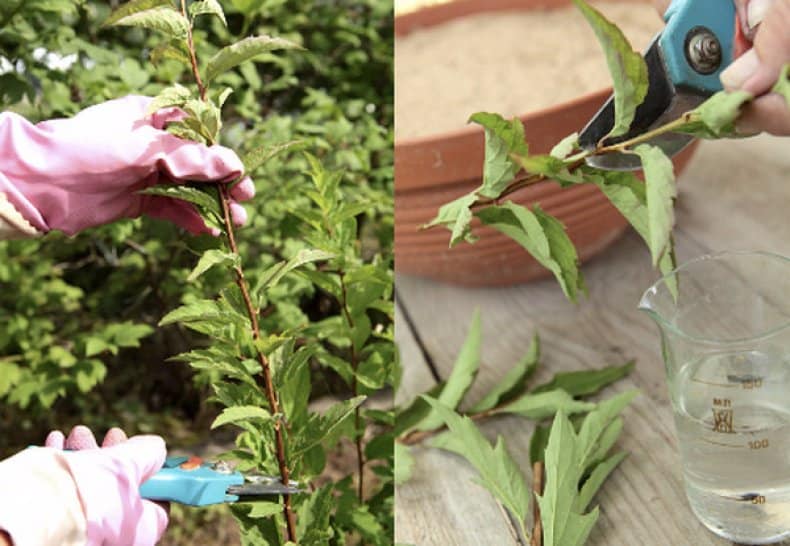

Getting spirea cuttings in spring
In May, take annual shoots of brown color, they are semi-lignified. The length of the handle is chosen 12-15 centimeters, the number of internodes on it should be 4-5 pieces.
Advice! We cut the upper part of the shoot straight (just above the bud), and the opposite part at an oblique angle (we retreat a little from the extreme lower bud).
We always use twigs that grow vertically, it is good if they are straight. Taking into account the season, we help the cuttings with special stimulants so that they take root faster and more painlessly.
You can use epin, zircon (liquid preparations), then granular or powdery heteroauxin, root.
We plant the prepared cuttings in wet sand or peat, cover with polyethylene (a cut plastic bottle). Pots, containers, mini-greenhouses, greenhouses or special cuttings - there are many options for planting.


Spirea cuttings in summer
In June (Japanese spirea) or July (most other species), we take shoots that have just faded, and leaves on them grow from each internode. Gardeners successfully use both green young twigs and semi-lignified annual stems.
- The length of the handle is 10-15 centimeters, the buds on it are at least 4;
- Remove the lower leaves, and cut the upper ones in half;
- Put the branches in a solution of a root formation stimulator (epin) for 4-6 hours;
- Before planting, dip the lower cut into a dry root or heteroauxin (do not shake off);
- You need to plant in a mixture of wet sand with peat, or just in wet sand or vermiculite, in any case, the soil should be light and loose;
- We put the branches in the ground at an angle, deepening, no more than 3 centimeters.
Sprinkle some water over the shoots and cover them with plastic wrap or a plastic bottle (remove after a couple of weeks). A warm, humid environment is created for the seedlings. From time to time we water and spray the shoots, avoiding drying out and waterlogging.
Sprinkle seedlings overwintering on the street with peat or spruce branches. For the winter season, containers or boxes are also brought into the basement, the pots are left in cool rooms or on a dark windowsill.
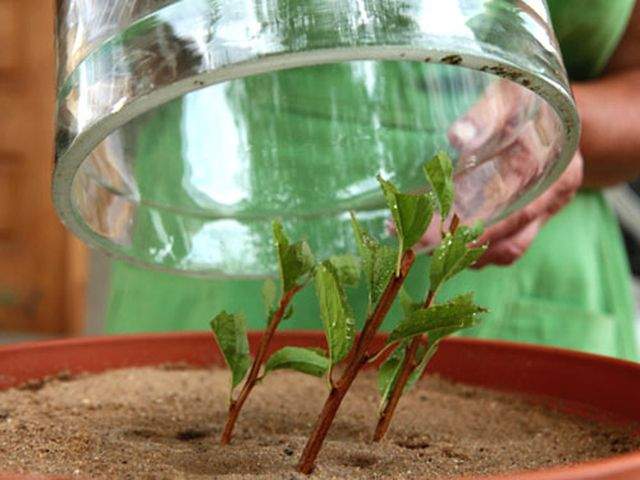

It is convenient to root spirea shoots both in a pot and in a greenhouse. I am building a kind of greenhouse for cuttings of any garden crops. I do this:
- I am digging a small bed in a sunny area;
- I bring in humus, peat and sand, water;
- I level and plant shoots at a distance of at least 10 centimeters;
- I stick in the arcs directed from east to west and cover them with polyethylene;
- I sprinkle the edges of the film with earth (you can strengthen it with bricks or boards), and shade from above with tree branches (I have bird cherry or willow);
- From the ends I do not cover with branches, there is only a film.
Sometimes we ventilate the cuttings, water them, and for the winter we remove the film cover and sprinkle the rooted seedlings with peat or humus.


Is it possible to grow spirea in the Urals
The climatic conditions in the Urals are different in different regions: the average winter temperature in the north is minus 22 degrees, in the south - minus 16 degrees. Summer rates for the northern regions are + 8, for the southern regions + 20 degrees. The polar regions of the Urals are characterized by long (up to eight months) and cold winters, alas, short summers; in the south, it lasts up to five months. If we talk about spirea, planting and care in the Urals, then it is possible to grow it here, preferably in the southern regions. The flora of the Urals is very diverse, in the west and south such thermophilic plants grow as oak, beech, hornbeam, linden, maple, mountain ash, hazel, fragrant violet, shoes, honeysuckle, currants, hemlock. Winter-hardy varieties of spirea in the Urals will take root, will grow and reproduce well.
Useful Tips
- Cuttings can be treated (sprayed) with potassium permanganate, aloe juice, garlic solution. This will prevent the development of diseases and pests.
- Planting cuttings at an angle of up to 45 degrees stimulates root formation.
- To obtain shoots, we use only healthy bushes, and if only spiraea affected by the disease is available, we treat it with insecticides (aktara, actellik). And only after a few days we start cutting the cuttings.
- Plant young spirea seedlings next to conifers - these are the best neighbors of the plant.
Since the propagation of spirea by cuttings gives a good result, this method is most common for obtaining cheap planting material.
Is it possible to divide the spirea bush
The division of the bush is one of the most successful methods of reproduction of spirea (it is also called meadowsweet), especially if it is not more than 4 years old. Older plants can also be divided, but in this case, the process becomes more laborious due to the overgrown root system and the soil adhering to it. Such an adult shrub will have to be washed for a long time and diligently untangled the roots.
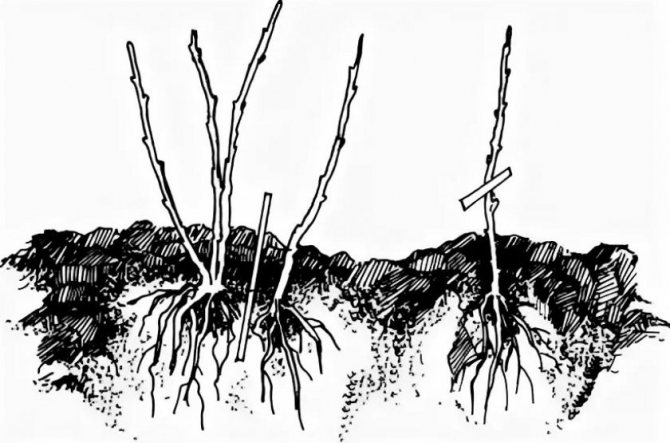

Japanese spirea: propagation by seeds, layering, cuttings
Spirea has been known in Russia for a long time. Another name for spirea is meadowsweet.
The first memories of this flower can be found in the epic "Sadko".
That is, it can be assumed that people paid attention to the spirea even during the years of the formation of this epic, and this was still 1478 - the period of the annexation of Novgorod to the Great Moscow principality.
From the dictionary of V.I. Dahl, we can find out that in the 19th century, spirea was far from decorative, but was actively used for practical purposes. Spirea has thin, but very strong twigs. In those years, they were used to make ramrods and whips.
Now spireas have only decorative value and are widely used in the formation of alpine hills.
What varieties are suitable for growing spirea in the Urals
Consider the most winter-hardy and frost-hardy types of spirea.
Spirea gray
- a spreading shrub of two meters in height with strong ribbed stems. The upper surface of the leaves is gray-green, paler below, the shape of the leaves is sharp at both ends. Inflorescences are thyroid, loose, white flowers. The species blooms in May, bears fruit in June.


Spirea Wanguta
- a two-meter shrub, a cascading crown shape, a diameter of two meters. Stems are flexible, thin, drooping. Leaves are not pubescent, length up to 3.5 cm, oval shape with a serrated edge. Flowering begins in the third year of life, the flowers are white, it is noteworthy that re-flowering is possible in August. Shades tolerant, winter-hardy, grows quickly. The preferred reproduction for this type of spirea is by cuttings. Looks great near water bodies, among conifers, along the edge of large flower plantings.
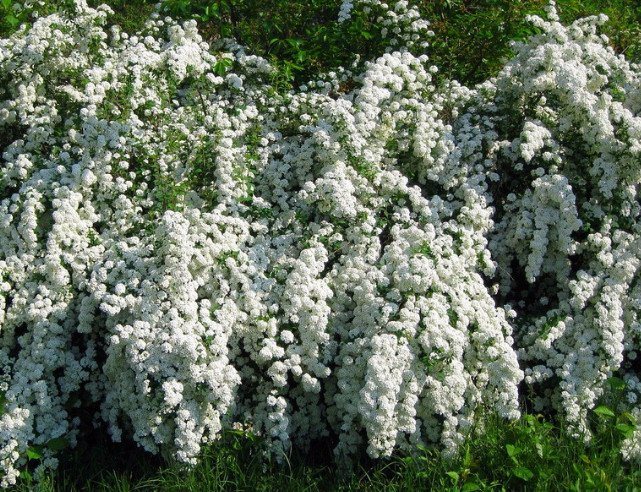

Spirea oak-leaved
- common in Eastern European territories, in the Far East. Feels great on rocky soils. The bush grows up to two meters, the stems are flexible, gently hanging down, forming a hemispherical crown. The leaves are oval-oblong, with a jagged edge, the length of the plate is 5 cm. It blooms in May in a creamy color, the duration of flowering is 30 days. Decorative in autumn: foliage acquires a golden yellow color. Pruning spirea in autumn is well tolerated and stimulates the growth of new, stronger shoots.


Spirea average
- a lush shrub, distinguished by bright green foliage, the shape of the crown is spherical. Blooms in May with snow-white flowers forming thyroid inflorescences. Easily adapts after transplantation, propagates by root suckers. Frost-resistant, not afraid of shade. Fruiting in the third year of life. Under natural conditions, it grows in Siberia, the Far East and Central Asia.
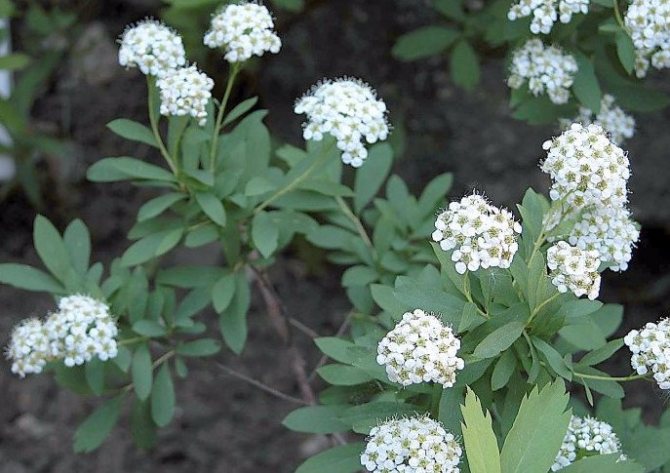

Spirea birch-leaved
distributed in Korea, Japan, Siberia and the Far East. It is named so for the similarity of the shape of the foliage to the birch. This species is short - only 60 cm in height. Green leaves turn yellow in autumn, standing out in the area with a bright golden ball due to the rounded shape of the crown. The plant blooms in June, the first flowering occurs in the fourth year. White or pale pink flowers are collected in thyroid inflorescences. Hardy, does without shelter for the winter.
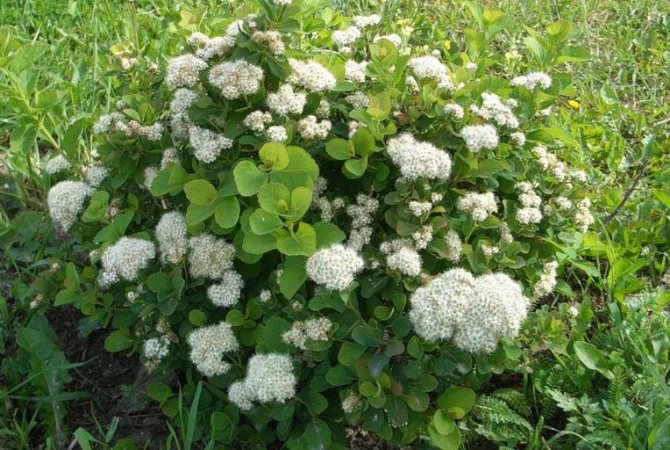

Spirea Billard
distributed from Arkhangelsk to the steppes of Central Asia and the Caucasus. Two-meter shrub with large leaves up to 10 cm long. The leaves are fleecy to the touch, gray-green in color. Blooms with bright pink flowers, collected in dense pyramidal inflorescences. Long bloom - from June to the first frost. Does not bear fruit, propagates by cuttings. Shade tolerates well.
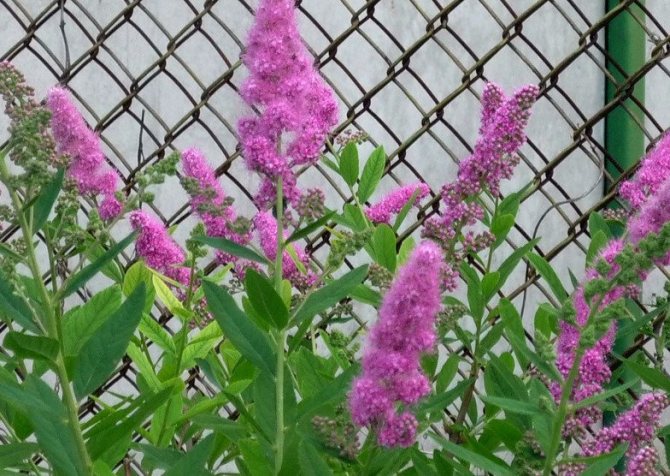

Did you know? The first mentions of spirea or meadowsweet are in the epic "Sadko". They began to grow spirea in 1586, the type of willow spirea was known. Later, in the 18th century, they started breeding spiraea of medium and oak-leaved, a hundred years later, birch-leaved spirea appeared.
Varieties of Japanese spirea
Spireas number about 90 species, growing mainly in forest-steppe, steppe and semi-desert zones. Some species are used very often in landscaping gardens, others only occasionally.
Spireas can be divided into two groups - spring and summer flowering.
With the skillful selection of a large number of different types of spirea, continuous flowering can be achieved from early spring to late autumn.
Plants from the first group have a shorter flowering time, while blooming together. And in the spirea of the second group, flowering is longer.
The group of spring blooming spirits includes:
- alpine, Wangutta, Cantonese, Nippon, Thunberg's spirea, Emilia's spirea and others ...
The summer flowering group includes the following types of spirea:
- white-flowered, birch-leaved, felt, dense-flowered, dwarf, lilac, Japanese ...
Planting new shrubs
How to plant new plants after dividing:
- In a sunny location with fertile soil, dig a hole with vertical walls 1/3 larger than the root system. When doing this, leave about 1 m in front of the other plants.
- Leave the hole for 7 days.
- Divide the shrubs, their roots can be soaked for 1 hour in a root growth stimulator.
- Lay a drainage layer at least 15 cm thick at the bottom of the pit, you can use fragments of bricks, stones, rubble.
- Take leafy or sod soil, add ½ of its volume of sand and the same amount of peat, mix, pour a little over the drainage.
- Lower the root system of the spirea, spreading the processes well.
- Place the rest of the earthen mixture, leaving the root collar on the surface. Seal carefully.
- Pour 2 buckets of water over each bush.
- Lay out a layer of mulch.
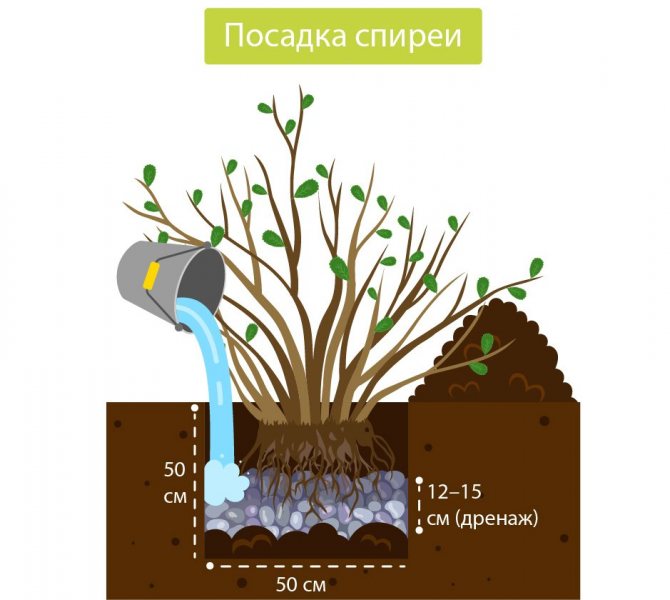

Spirea - reproduction
Reproduction of spirits is possible in several ways: by seeds, layering and cuttings.
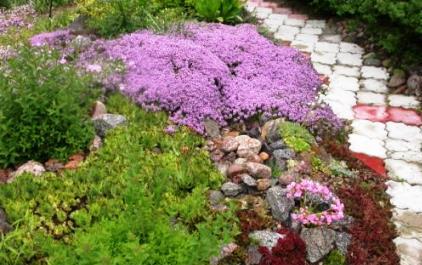

Propagation by seeds Spirea seeds are best planted in spring. You need to sow in boxes, after moistening the surface. Then the crops must be mulched with peat or earth, in a thin layer. 3 months after the first shoots, it is recommended to make a pick of the seedlings. Then pour, loosen and mulch.
If you resort to the method with layering, the lower branches in the spring need to be bent to the ground, placing them in a recess, attach and cover them with earth.
For the winter, the sprout must be covered with a ball of dry leaves. In the spring, the shoot can be planted in a new place.
Most spire can be propagated by green cuttings in a manner similar to propagation by cuttings of perennials such as peonies or delphiniums. Japanese spireas should be cut from the second half of June.
To get good cuttings, high humidity is a must. To obtain the best substrate, you need: 1 part of coarse washed sand and 1 part of peat.
Watering should be at least 4 times a day. Rooted cuttings should be dived in the spring.
Experienced gardening tips
In order for the spirea to develop well after rooting and delight with flowering, you need to follow simple rules:
- For planting in a permanent place, a deep hole is prepared, which is 3 times the size of the root system. The bottom is well drained with broken bricks, pebbles and sand.
- The well is filled with a nutrient substrate from garden soil, peat and sand. The components are mixed in a 2: 1: 1 ratio
- The seedling is lowered into the hole so that the root collar remains level with the soil.
- Spirea after planting is mulched with humus and watered abundantly.
If there are several plants on the site, then a distance of up to 1 m must be maintained between them.To create a hedge from a spirea, the plants are planted more densely, it is enough to leave 40-50 cm between them.
The first years after rooting, perennials need careful care. At this moment, shrubs are acclimatizing. Water them regularly, the root system should not dry out. In rainy weather, you do not need to additionally moisten the soil.
During the growing season, perennials must be fed with liquid mineral mixtures and organic matter. For the winter, the soil under the plant is mulched with dry leaves, the shoots are tied and covered with spruce branches. The first time the spirea is trimmed after wintering.
Planting spirea
It is better to plant this spirea in a sunny place in sod or leafy soil, also add peat and sand, since the spirea will grow faster and better on rich soil.
Planting depth is about 40 cm, the distance in rows is about half a meter in a hedge. If planted in groups, the distance should be approximately 0.7 m.
The optimal planting time is September, the weather should preferably be rainy. Watering should be moderate.
Pruning shoots
In the group of summer flowering plants, which includes Japanese spirea, flower inflorescences appear at the ends of young shoots, and old shoots at the top dry up.
In the fourth year of life, old shoots must be cut off, their upper part removed. Otherwise, the top of the old shoot will deviate to the ground and dry out.
The shoot lives on average 7 years, but since the flower gives rich root shoots, the plant as a whole is durable.
At the end of the fourth year of the culture's life, it is necessary to prune the upper part of the plant every spring (approximately at a height of about 35 cm from the beginning of the root).
Fertilizers
The soil should be fertilized in the spring immediately after pruning. In mid-June, you need to fertilize the plants themselves. For the manufacture of fertilizers, you need to pour 1 bucket of slurry into 5 buckets of water, then add 10 g of superphosphate to 1 bucket of the resulting substance.
To avoid weeds, cover the circles around the trunk with small shavings or almost decayed foliage with a layer of 5-7 cm.If you plant this whimsical flower on an alpine slide, then the garden plot will acquire a unique Japanese flavor and will delight you with bright colors.
Features of spirea care in the Urals
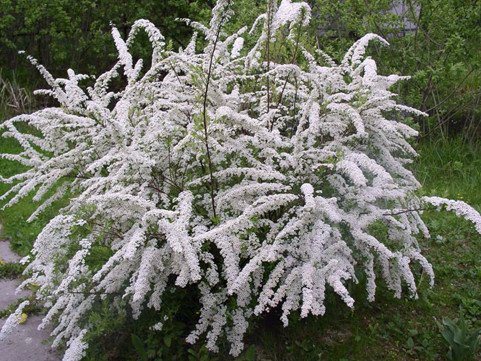

Plant care includes watering, loosening, mulching, feeding the spirea and pruning. In the Ural climate, the plant needs moderate watering - once a month 15 liters of water under the bush, if the summer is dry - twice. After watering, it is imperative to loosen the soil in the near-trunk circle, the root system of the plant must breathe. It is also advisable to weed from weeds so that the weeds do not take away nutrients from the spirea. How to feed spirea in early spring? For good development of the plant, fertilizing with the preparation "Kemira" (120 grams per square meter) is useful. In the second half of summer, they feed the mullein infusion, adding 10 grams of superphosphate to ten liters of solution.
The plant is not severely pruned so as not to remove the buds.
Formative pruning is carried out once, then only sanitary procedures. In the spring, the frozen tips of the branches are removed. After flowering, old unpromising shoots, dry or damaged, are cut off.
Spirea is protected from pests by spraying with tobacco infusion, decoction of hot pepper or marigolds. In serious cases, insecticides are used.
Important! Formative pruning should be done in the spring so as not to weaken the plant before winter.
How to propagate Spirea by cuttings in spring, a detailed description with a photo
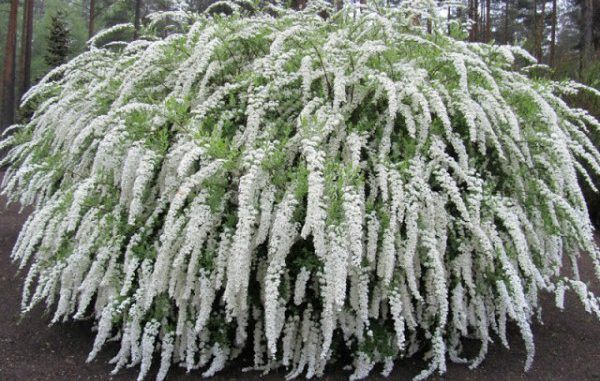

Spirea is a flowering shrub known to all landscape designers and gardeners. There are many types of spirits, each has its own characteristics, inflorescences and shape., however, everyone has one thing in common - having seen and felt the flowering of the spirea once, everyone who has a summer cottage will undoubtedly want to ennoble it with this shrub.
Further care
After planting, the spirea needs such care:
- Watering - 1-2 buckets during the dry season for plants that have taken root, daily for those that had to be replanted.
- Top dressing: one-time annual for fertile soil, 2-3 times a year for the poor. To do this, dilute 1 tablespoon of manure or bird droppings in 200 ml of water, leave for 7 days, pour in 2.2 liters of water and feed the bush. Organic fertilizers can be replaced with mineral fertilizers in the amount of 65–70 g per 1 m² of planting.
- Weed removal.
- Loosening - after watering, it is advisable to combine with the previous paragraph.
- Pruning - to create an attractive appearance.
- Treatment from diseases and pests - before or after flowering.
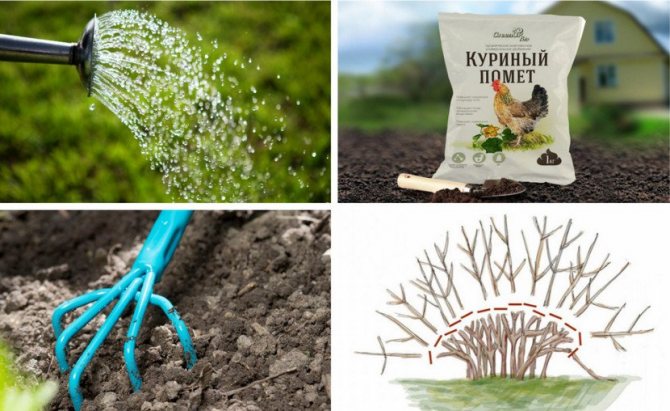

Description of culture
Fortunately, spiraea is a very unpretentious shrub. It easily takes root in a new place, winters well and grows, does not require careful maintenance..


Spirea Japanese Little Princess
This shrub will delight you with its flowering from spring to late autumn.It is also easy to reproduce, which is also an advantage.
Testimonials
Last year I made a stalk from my spirea gray Grefsheim. I put him in a pot. He grew up over the summer. I dug the pot into the ground for the winter, and in the spring the stalk in the pot has already bloomed! Now it has begun to grow rapidly. I plan to plant him so that the bush could be seen by me at least through some window, since his "mother" sits in front of the house, that is, from me behind the fence and decorates the life of neighbors and passers-by.
Natalia
This year, I dug in my branches, having previously cut them at the burial site. Successfully.
Olga
I am not wise with my spireas. I cut the cuttings into the cuttings. Earth + a small layer of sand. They take root even without cans in 2 weeks, and even under the cans they generally have plenty of freedom. After a month and a half, the bushes are already growing
Elena
All of the listed breeding options for spirea are suitable for most common species. Novice gardeners are advised to start with a simple method - cuttings. And after gaining experience, move on to more complex options.
Breeding methods for Spirea in spring and autumn
Cuttings
For spirea, cuttings are considered the most favorable reproduction. Since this is a vegetative propagation method, all the characteristics of the variety are preserved during cultivation.
Cutting by stages:
Only young shoots are suitable for cuttings, preferably annuals or younger, which grow strictly straight. A sprout is cut off, on which there should be 4-5 nodes with double leaves, the lower pair of leaves is removed. It is recommended to make cuts at an angle, the length of the cut cutting is 10-15 cm.
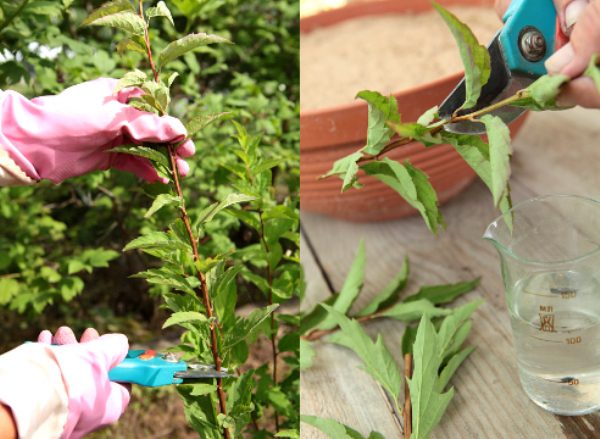

Preparation of Spirea cuttings
For better reproduction after cutting, the cuttings are placed in a solution of Epin or Zircon (another biostimulant is also suitable) for 9-11 hours, the solution is made up according to the proportion of 1 ml of biostimulant to 2 liters of water. It will not be superfluous to use root-forming powder stimulants - Ukorenit, Kornevin. They are sprinkled on the ends of the cutting.
The next step is placing the cuttings in wet sand... They should be positioned at an angle and deepened by 2-3 cm, then sprayed and covered with a jar or film. It is better to place the container with sand in a place protected from direct sunlight.
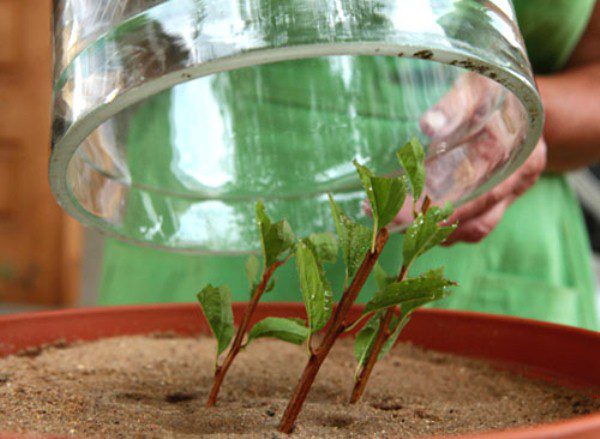

After planting the cuttings of Spirea in the sand, they are covered with a glass jar
The container with cuttings is taken out into the street, located in a shady area; cuttings require regular spraying and watering. By winter, they are covered with foliage, and in the spring they are already planted in open ground.
Video about the reproduction of Spirea by cuttings
Layers
An easier way. Suitable if you need to get a small amount of sprouts. In spring, young branches of spirea (preferably lower shoots) fall to the ground, pinned with a twig or V-shaped wire... Sprinkle with soil on top.


Reproduction scheme Spirea layering
Next spring, the root system of the shoots will be fully formed. You can separate the shoots from the main spirea bush and transplant for independent growth.
Seeds
A convenient way to get a lot of spirea sprouts at once. However, there are some subtleties here too. Seed propagation is not suitable for all types of this shrub.... If there is no 100% certainty or it is impossible to determine the type of spirea from the seeds, a test sowing of the bush can be carried out. In the fall, I plant several seeds in a pot (the amount is optional), water it well and sprinkle it with soil in an open area, for the winter, respectively, the sprouts are insulated. In spring, it will be possible to determine the type of spirea from the seedlings.
Propagated by seeds can only be spiraea Japanese, Nipponskaya and Dubravkolistnaya... Seeds of other species and varieties do not germinate well, and their hybrids may change in the future.
Several simple steps of seed propagation
In the summer bolls with seeds are cut from shrubs, stacked for 2 weeks in a dark, dry place to ripen. It is important to have time to cut the bolls before they open (in July - August).


Spirea seeds are harvested in the middle of summer.
Further, the seeds are harvested, and they can be planted in a box from mid-October to the whole of November, or in spring in April. The soil should also be prepared in a 1: 4 ratio - vermiculite and non-acidic peat, respectively... The box on the site is sprinkled with soil, if sowing is done in spring, the soil in the box should be thoroughly sprayed and covered with a film before the first seedlings emerge; regularly monitor soil moisture.


Spirea seeds are planted in a box at the end of autumn.
After several months, the sprouts should be dived. By this time, they usually reach a height of 2-3 cm; are seated at a distance of 8-10 cm from each other.
The box is again sprinkled with soil, it is advisable to place it in a shady place for the summer and water it regularly.
In autumn, the sprouts can be transplanted into open ground in the beds, and only after a year to the chosen permanent place for them. Spirea sprouts take root and adapt well, but they will begin to bloom no earlier than three years later.
Choosing a spirea as a decoration for a site, it is impossible to regret your choice in the future. This shrub pleases with long flowering, unpretentiousness. It can be propagated and transplanted at almost any convenient time., and with the help of chic forms - to create unique landscapes and compositions. Spireas can perform decorative functions in the garden, delight the eye with single flowering shrubs or serve as a hedge.
Useful articles
Features of the reproduction of the spirea shrub
It is most effective to propagate spirea in early spring or autumn, when there is enough natural moisture in the soil for the shrub to take root. However, experienced gardeners successfully breed it in the summer.


Spring breeding is planned until the buds are swollen. This is usually mid-March, but times may vary from region to region. If time is lost, then you will have to wait until the active growth of leaves stops. This usually occurs in late spring, when the spirea is preparing to bloom.
Shrub propagation in summer is possible, but only if the weather is cloudy. It is very important that the young plant does not lose moisture. Intense heat and lack of water adversely affect the survival rate of spirea. Work is planned for early or mid-June. If the spirea is still blooming at this time, then reproduction will have to be postponed for several weeks.
Autumn reproduction of spirea must be completed several weeks before the first frost. The work is planned for mid-September, but the planting can be extended until the first days of October. Autumn breeding has the most advantages. Gardeners are pleased with the fact that young plants do not need constant care, it is enough to insulate them for the winter. In summer and spring, spirea needs constant spraying and watering, without which the survival rate of planting material is low.
Alternative breeding option
Flowers also propagate by layering, focus on the spring. To do this, use the root shoots of the bush or lower shoots. A step-by-step guide to propagating a spirea by layering consists of the following steps:
- Dig a trench in the ground.
- After laying out the shoot in the groove, pin it.
- Cover with a layer of earth and level the surface.
Why pin up the top of the plant, you ask. This should be done so that the shrub does not spread upwards, but grows in breadth, the root system will also benefit from this.
If you need to get a large amount of planting material, pinch the top of the planting. This stimulates the growth of shoots from the buds located on the sides. When autumn comes, experts recommend digging out the layers and dividing them into parts based on the number of regrown shoots.
Rooting
To stimulate root growth after cutting the branches, it is recommended to put it in a special composition for a while. In the store for these purposes, you can buy products such as "Kornevin", "Heteroauxin" and "Vympel". After processing the branches, they must be seated in small containers. Let's consider the rooting process in stages.
- To root shoots at home, you first need to prepare the substrate. The easiest way is to use wet sand. You can also mix sand from peat or use any other loose soil. It is recommended to treat the substrate with a fungicide to prevent root rot.
- As for the container in which the branches will be planted, any containers with holes at the bottom are suitable here. It is necessary to plant cuttings correctly at a depth of 3 cm at an angle of about 45 degrees. It is necessary to observe the angle of inclination so that the growth of the upper parts of the branches slows down, and root formation, on the contrary, is activated.
- It is important that the soil is moist during planting. After the branches are submerged in the substrate, they also need to be sprinkled with water. It is advisable to cover the cuttings on top with a film or a cap from a plastic bottle. This manipulation is necessary to create conditions of high humidity and maintain temperature.
- Periodically, the seedlings are taken out of the shelter and moistened with a spray bottle. During cultivation, it is important not to allow the soil to dry out, but at the same time, do not overmoisten the spirea. Containers with cuttings should be removed to the windowsill, where the sunlight will not be too bright.
- As an alternative to keeping the seedlings for rooting, bury the containers in the garden. From above, you need to put dry leaves or peat on the ground so that the root system does not freeze. In winter, the container with seedlings is removed to the basement or transferred to another dark, cool place.
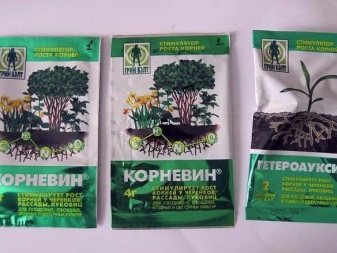

You can grow shoots not only in pots. If desired, a greenhouse is built on the site under the spirea.
- First, a garden bed is dug up, organic fertilizers are applied. It is recommended to add peat mixture and river sand to the ground. Then it is recommended to moisten the soil well.
- The branches are planted at a distance of at least 10 cm from each other. Next, you need to install the greenhouse frame and stretch the film on top. Polyethylene must be fixed well by pressing it to the ground along the perimeter of the greenhouse with bricks or other heavy objects.
- It is recommended to open and ventilate the mini-greenhouse from time to time. And also do not forget about regular watering of seedlings. For the winter, the film is removed, and the cuttings are sprinkled with a peat mixture.


Spirea pruning
Now let's talk about pruning, which differs for summer-flowering and spring-flowering spirits, since inflorescences in these groups are formed on shoots of different years.
Pruning Spring Blooming Spire
- In spirits blooming in May and early June, flower buds are evenly laid along the entire length of the shoots, but they bloom only the next year. Therefore, pruning such spirits comes down to shortening frozen and dried shoots. It is usually held annually in early spring (March to April).
- Adult old branches and thin shoots are harvested once every two years in the spring.
- Also, such bushes carry out anti-aging pruning. For this, old branches (over 7 years old) are cut out completely.
Pruning summer blooming spirits
In plants that bloom in July-August, inflorescences are formed at the ends of the shoots of this year. The next year, these inflorescences dry out, and new flowers form again on the young shoots.
- Shrubs of this group are pruned in early spring, at the very beginning of the appearance of leaves. Each well-developed branch is shortened to powerful buds, and small and too thin shoots are cut out completely.
- After the fourth year of cultivation, it is advisable to prune the bushes at a height of 25-30 cm.
Summer flowering spireas are short-lived. Replacement of bushes should be carried out at the age of 15-20 years.When replacing plants, they are usually guided by the quality of flowering and growth of the shoots. If they have noticeably decreased and rejuvenating pruning (on a stump) does not help, then the shrub should be replaced with a young one.


Growing spirea from seeds


How to grow spirea from seeds
All types of spirea reproduce without problems by seeds, with the exception of hybrids. They may not set seeds at all, or seeds from such plants do not replicate maternal qualities.
Sowing seedlings
- Seeds are best sown in spring in planting boxes with a light soil substrate.
- Planting depth 1 cm, distance between seeds at least 2-3 cm in a row, between rows 6-8 cm.
- Water in moderation, there must be drainage holes in the bottom of the container so that moisture does not stagnate.
- Usually the germination rate is at least 50%. The first shoots appear within two weeks and in the first year of life they give one winding shoot.
- When 2-4 true leaves appear, they dive into separate cups.
2 months after germination, seedlings can be planted in the ground. At the same time, the roots are slightly shortened to stimulate their branching. In the second year, the bushes begin to branch. It is necessary to monitor the moisture content of the soil and prevent it from drying out. For 3-4 years, the first flowering begins.
Sowing in the ground
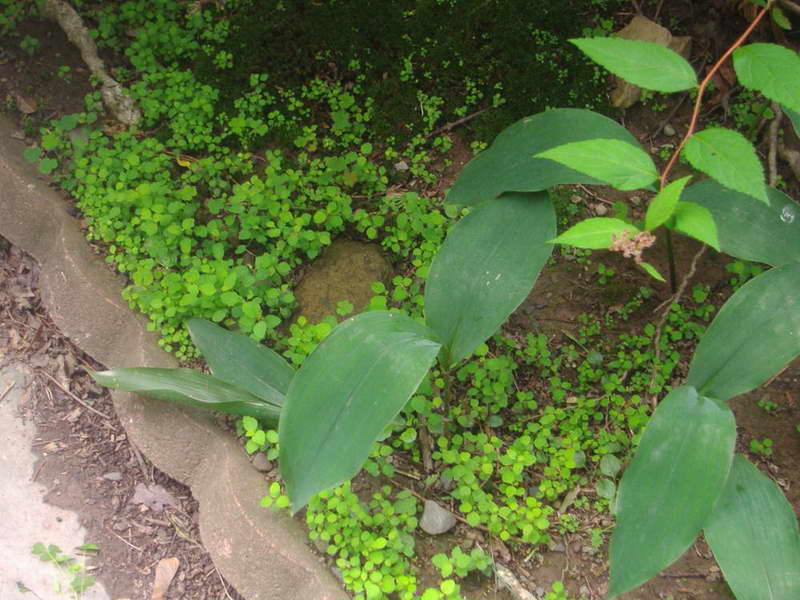

Spirea Japanese photo of seedlings in the open field
Spirea can be sown directly into the ground as soon as the ground is ripe, in early spring, or in late autumn, before winter. Densely emerged seedlings are thinned out, and when they rise a little, after 2-3 months, they are planted with an interval of 30-40 cm. For the winter, the seedlings are covered, and in the spring they are planted in a permanent place.
If you do not cut the spirea in the fall, in the spring you can find dense self-seeding shoots. These small seedlings can be left to grow and later transplanted as described above.
Description of the plant
Spirea is not a novelty in floriculture and has been familiar to many for a long time. However, earlier it had the name meadowsweet or bride.
In its structure, it is more similar to a shrub. In nature, it can be found in most areas of the northern hemisphere: forest-steppes and semi-deserts. It is also found in the Urals and Siberia. It belongs to the perennial shrubs of the deciduous type, and there are a huge number of its species. Experts identify about ninety copies. The plant can be found in various forms:
- weeping;
- spherical;
- upright;
- cascading;
- pyramidal;
- creeping.
It is also diverse in size. Some shrubs only grow up to half a meter in size, while others can reach two and a half meters in height.
Spirea foliage may also differ depending on the type of shrub. Their size can be small or large, and the shape is round or lanceolate. The color palette ranges from golden yellow to dark green. By autumn, the shade of the leaves changes to orange or purple.
The color and shape of the inflorescences also depends on the plant variety. Shades can be white and red, but the shape of the inflorescences is as follows:
- pyramidal;
- paniculate;
- spicate;
- corymbose.
On the shoot, they can be located along its entire length or only on the crown.
Spirea is a rather unpretentious plant that does not require special care and looks very beautiful, so many flower growers and gardeners opt for it. Planting and caring for her is not difficult at all.
Planting in a substrate
Spirea cuttings are rooted in a specially prepared substrate, which can completely consist of river sand or a mixture of sand and peat in a 1: 1 ratio. To disinfect the soil, it is spilled in advance with a fungicide (Previkur) in order to eliminate the risk of developing root rot in the future.
For planting green cuttings, any containers (pots, containers, bowls) are suitable, in the bottom of which there must be holes for excess water to escape.The depth of the containers should allow the entire lower part of the cuttings to be deepened to the remaining lower leaf. It is necessary to plant at an angle of 45 degrees, which will slow down the growth of apical shoots and activate the process of rooting.
Before planting, the soil must be thoroughly moistened, but excluding stagnant water, excess moisture should be able to freely escape through the holes in the bottom. The ideal option is to place the wick on the bottom of the container, which will help optimize the watering process for the seedlings throughout the rooting period. For these purposes, you can use 2 cm wide cotton strips or thick rope. One end of the wick is placed under a layer of soil at the bottom of the pot, and the other is taken out through the hole into a container with water. Such a device will help to provide automatic watering for spirea cuttings.
Also, for successful rooting, cuttings must be provided with high air humidity, so the containers are covered with glass or a plastic bag. This will help create a greenhouse effect and thereby provide the seedlings with the necessary moisture.
Good day to all readers!
Today we'll talk about planting a spirea, further care, reproduction and many different varieties.
Such a variety of species and varieties, like the spirea, you rarely find! Among them there are giants up to 2.5 m in height, there are also dwarfs less than 20 cm in height. Branches are creeping, they can be recumbent or spread out, there are also erect branches.
The bark on them can be from light to dark brown. On woody shoots, the bark begins to flake off.
The leaves are incredibly diverse, the shape depends on the species or variety - they are all petioled, but they can be lanceolate, they are round, and in some varieties they have three or five lobes.
The flowers are small, from snowy white to crimson, in large numbers collected in inflorescences. All spireas bloom in spring or summer. In some varieties, these are panicles, in others, scutes or pyramids, but spike-shaped inflorescences are also found. In different spirits, the inflorescences are located in different ways: they can be located only at the ends of the shoots, they can be along the entire length of the branch. And now more about
Preparing for landing
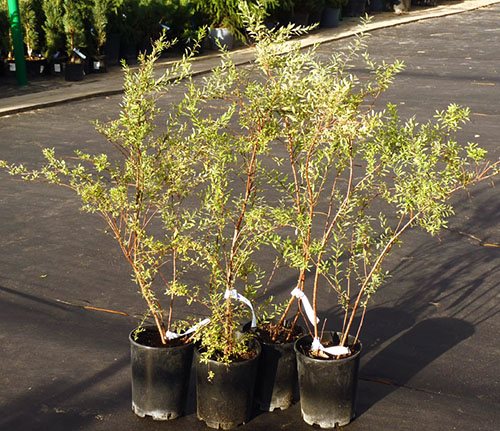

According to the advice and observations of gardeners, spirea develops well in sunny areas, with loose, fertile soil. Ornamental shrubs should be planted taking into account the design of the site. Please note that the distance between plants when planting in the form of a hedge is maintained at least 50 cm.With a single arrangement, this distance can be increased. The root system must be prepared before planting. If it is open, then the damage on the processes is clearly visible, which must be removed with a sharp garden pruner.
The cut angle should be even, clear, and not wrinkled and shaggy.
Be sure to correct the crown of the bush. The regrown branches should be shortened by a third. With very dry roots, the shoots are cut off a little more. When purchasing a spirea with an earthen lump on the root system, it will need abundant watering so that it softens and only after that it will be possible to lower it into the pit for planting.
How to plant a spirea. How to propagate a flower by cuttings
It is important to pay attention to the incredibly large number of varietal varieties of spirea. Among them, there are real giants with stems up to two and a half meters high, and dwarf specimens that grow only up to 20 centimeters. The plant is characterized by lush creeping branches, which can be recumbent, spread, and erect. The color of the bark can be very different, but most often it is represented by light and dark brown shades. Lignified shoots begin to shed the bark over time.
As for the shape of the leaves, it is very different and is determined by the type or variety. In all cases, the leaf plates have a petiole shape, although there are lanceolate, and round, and five-lobed specimens.In inflorescences in the form of scutes or pyramids, tiny flowers are formed, painted in snow-white or crimson tones. Spirea bloom begins in spring or summer.
And now, in fact, we will consider all the features of the correct planting of spirea in the spring.
Correct selection and preparation of a seedling
Spirea can be planted in autumn and spring, while the flowering period does not play a role here. It is better to choose a stalk in a special garden center or nursery of ornamental plants, giving preference to options with a closed root system or a lump of earth. The seedling should remain young and compact, and there should be no leaves on it. Otherwise, the plant will not be able to properly transfer the upcoming event.
It is better to refuse overgrown bushes with highly branched shoots. It also makes no sense to buy plants with a large root system. For example, if roots appear from the drainage hole, such a seedling will not be well received in a new place.
When choosing plants with an open root system, be sure to ensure that the quality of the root lobe is correct. It is important that the roots are moist and elastic and that any broken or blackened elements are completely absent. You should also beware of dry or brittle roots, which are characterized by poor immunity. It is very good if the rhizome is covered with a mixture based on clay, manure or stimulants.
As for the branches, they must remain alive and flexible, have green bark and healthy buds.
Suitable place for planting a seedling
Almost all exotic plants have a particular whimsy in terms of choosing a planting site. Spirea is no exception. When looking for a suitable site, you should consider a number of the following features:
a very light-loving "green friend", although he lives quietly both in constant sunlight and in partial shade. By the way, in the latter case, the growth activity of the green mass will be more intense, but flowering will be much worse. With a little shading, the peduncles acquire bright, contrasting tones and acquire a very elegant decorative effect;
preference should be given to permeable, moderately moist soil. To improve the composition of the garden soil, it is necessary to mix it with leaf or turf soil in equal proportions. You can also use heavy clay soils, which are loosened with peat and sand. Spirea Billard and other hybrid varieties do not take root well in calcareous soils;
it is important to create a drainage layer based on expanded clay or broken brick;
should be one third larger than the earthen clod of the seedling and have a depth of at least 0.5 meters. It is important that the neck of the roots is at the same level as in the nursery;
on a cloudy day, and in rainy weather the probability of survival is maximum;
together with conifers;
Reproduction of spirea in spring
In spring, it is customary to plant those varieties of spirea, the flowering of which begins in summer. It is important to hurry with planting in order to have time to plant the bushes before the buds open. Regardless of the date of planting, the pit should be made according to the general principle: the walls are made vertical, and the recess is dug 2-4 days before planting. The optimum diameter of the drainage layer is 15–20 centimeters. Landing features are as follows:
- In the process of planting
for seedlings, it is important to shorten the aerial part of the plant by cutting off the long and dried roots; - Then, the soil removed from the pit
should be mixed with fertilizer. You may need to use peat or sand; - At the bottom of the pit
a characteristic mound of soil is arranged, where a plant needs to be planted soon; - After the roots
the spireas will be half hidden, you can pour out a bucket of water, and then fill the hole completely; - Droot near the bush
is compacted, and the seedling is slightly pulled up. This is necessary so that the rhizome can take its normal shape; - To maintain optimal humidity
soil, the soil shaft around the bush is watered and covered with mulching material. Also, the use of top dressing will not hurt.
Features of planting in the fall
In addition to reproduction in the spring, spirea can be planted in the fall. This method is suitable for all varieties, regardless of flowering time and species differences. The main thing is that the planting is carried out before the end of the leaf fall. In this case, the method of reproduction by dividing the bush manifests itself well, while it is suitable only for 3-4-year-old plants. Older specimens have a very large root system, which is not easy to remove from the ground and divide.
The shared bush must be dug out of the ground. If some of the roots are damaged during the removal process, this will not do much harm to the spirea. It is important to place the finished bush in a bowl of water and leave it there for several days. The damp earth should remain at the bottom, and the rhizome should be completely free. The option of removing old soil with running water is encouraged.
If you are going to propagate the spirea by dividing the bush, then for the procedure it is better to use a special tool - a sharp pruner. It is important that on each plot there are branched root lobes and about two or three young shoots at the age of 1–2 years. Thereafter, follow the planting instructions that apply for spring planting. To begin with, the hole needs to be well drained and an earthen mound should be formed where the roots will be straightened. Then it remains to cover the depression with earth and provide it with balanced watering as the roots are buried. After creating an irrigation hole, it remains to mulch the surface.
Features of spirea care. Balanced watering, pruning and covering
If you are choosing a garden plant with an unpretentious and hardy character, spirea is the most suitable option. The flower needs minimal maintenance, which includes:
The rhizome of the spirea is located at a shallow depth, which is why the need to mulch the soil appears very often. It is also important to water the bush at least 2 times a month, pouring one and a half buckets of clean, settled water under it.
Loosening the soil and removing weeds is an important factor in the good health of the bush. For top dressing, you can use complex fertilizers, including: mullein infusions and superphosphate mixtures, at a concentration of 10 grams per bucket of infusion. It is important that feeding activities are carried out after pruning and before flowering.
As for pests and diseases, spiraea practically does not encounter them. In rare cases, the bush is under the influence of aphids and spider mites, which create colonies on young, still insufficiently formed shoots. Aphids are able to suck out juices and weaken the plant, creating secretions, where a sooty fungus soon forms, which seriously worsens the condition of the leaves. To combat the problem, you can use special preparations or herbal decoctions. If the number of pests is small, you can get rid of them using a stream of water. However, in most cases, contact with such insects does not cause serious consequences and they disappear on their own, without harming the decorative effect of the bush.
Spirea pruning
As for pruning, such an event should be carried out when the bush grows to an impressive size.
Spring-flowering species are located along the shoot, which is why only the tips frozen in winter need to be removed on them. If we talk about old shoots, then they are pruned only once every 7-14 years. Branches are cut at ground level, and 5-6 parts are created from the grown shoots for future flowering. After 1-2 years old shoots can be removed.As a result, such actions will have a good anti-aging effect on the plant. Sanitary pruning is carried out throughout the season.
Spireas that bloom in summer should be trimmed in early spring. The shoot is cut to large buds, and small parts and misplaced elements are completely removed. After intensive pruning, new, strong branches will grow. Senescent shoots are removed regularly. Otherwise, the bush will not receive the required amount of vitality to create new shoots. 4-year-old shrubs can be pruned every year, leaving 30 centimeters above the ground. If such an action does not lead to rejuvenation of the bush and healthy shoots do not appear on it, the bush will have to be divided or replaced. As for the average life expectancy, it reaches 15–20 years.
Features of the reproduction of spirea
Spirea can be propagated by the following methods:
- seeds;
- cuttings;
- dividing the bush;
- layering.
The most unsuccessful method of reproduction is considered to be seed. The fact is that with its help it is possible to breed exclusively non-hybrid varieties, since the varietal properties of the new plant will be completely different from those of the mother bush. In addition, the probability of germination is extremely low, since the seeds require laborious stratification.
With regard to propagation using cuttings, this method shows good results. If you follow the basic recommendations, then the planting material will serve for the germination of new seedlings in 70% of cases. In this case, rooting occurs without the use of root formers. For successful rooting, you need to take a strong annual shoot and divide it into cuttings with 5-6 buds. The sheets in the lower part are preliminarily removed, and the remaining sheet plates are cut in half. Excellent rooting is seen when using an epin solution in which the cuttings are soaked. The lower part of the planting material can be processed using Kornevin.
The selected cutting is planted in moist soil at an angle of 30–45 degrees. As a substrate, you can use various soil mixtures, including: sand, perlite, nutrient soil, vermiculite and others. To protect the cutting from aggressive environmental influences, you can cover it with a cut-bottom plastic bottle. Such an improvised greenhouse allows you to maintain a uniform temperature for a long time.
Given the basic guidelines for spiraea care, you can grow truly healthy, beautiful and graceful bush
with lush flowering and excellent germination rates. It is important that all breeding rules are followed as accurately as possible. In this case, the result from the upcoming landing will be successful, and the effort spent will not be in vain.
It is this bright garden guest that is the favorite plant of flower growers, due to its spectacular appearance and unpretentious care. Another weighty argument in favor of growing this flowering shrub is the ability to propagate spirea in different ways. Moreover, this can be done almost all year round.
Harvesting cuttings
As noted earlier, it is recommended to harvest branches in cool and cloudy weather. The branches are cut from healthy and strong bushes. If the plant has signs of disease or parasite damage, then before harvesting the cuttings, the shrub must be treated with special means. After spraying, shoots can be cut off no earlier than on the fourth day. If it was not possible to cure the plant the first time, then it is recommended to repeat the treatment of the bush. For reproduction, you only need to cut straight branches growing upward. Brown shoots should not be more than one year old.
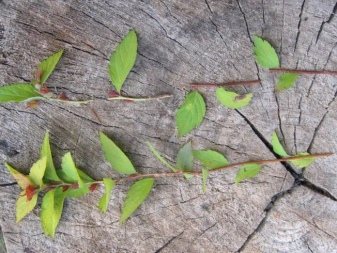

If the harvesting of branches takes place in the summer, then those shoots on which flowering has already stopped are cut off. It is desirable that all leaves on them are intact. For reproduction, both very young cuttings and annuals are suitable. The length of the cut branches should be about 11-15 cm. Each cutting should have at least 4 green leaves or buds. Cut off the shoot with a sharp knife or blade at an angle of 30 degrees. The top of the branch also needs to be trimmed, but already at right angles.
Important! It is recommended to trim the leaves a little: the two lower ones are removed completely, and the upper ones are shortened exactly by half. This procedure will speed up the rooting of cuttings, as it will provide less moisture loss.
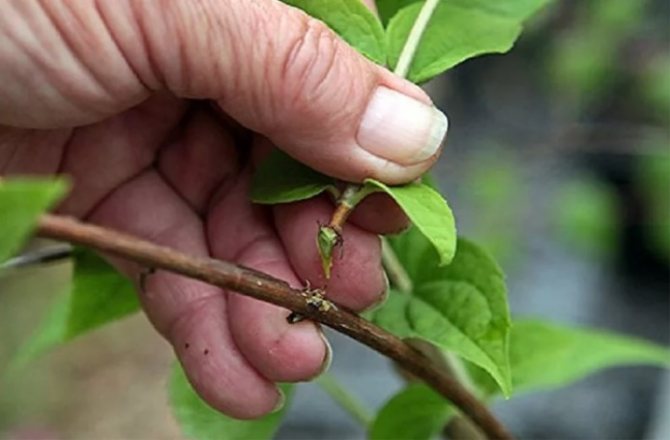

Reproduction by dividing the bush
The mother bush should be at least three to four years old.
To do the work, you should choose cloudy autumn weather:
- The dug bush is freed from the ground, soaked in water for an hour and a half;
- With the help of a sharp pruner, the spirea bush is divided into 2–3 divisions;
- The upper part of the bush is shortened, the roots are slightly pruned;
- They are planted in wells prepared and filled with a fertile soil mixture;
- Watering is carried out immediately.
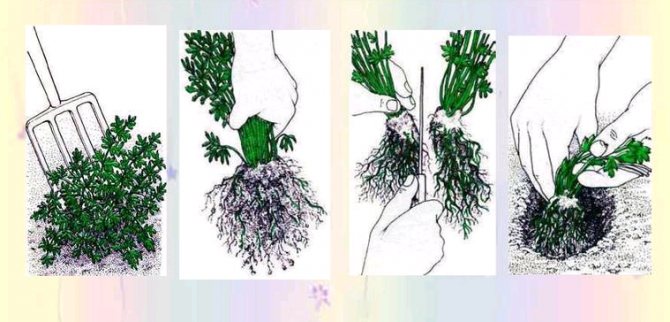

Spireas do not cover for the winter. It is good enough to mulch the soil around the plant with leaves, spruce branches, sawdust.
The right to choose to receive spirea seedlings is individual in any case.
It is still recommended for beginners to start by growing spirea by layering and dividing the bush. Cutting can be done by gaining experience in this not very difficult, but exciting business.
Growers of success in reproduction and prosperity for your spireas!
Helpful hints
To propagate spirea by cuttings, you do not need to be a professional gardener. This procedure is quite simple, even a beginner can handle it. For successful breeding of a shrub, you can use the following useful recommendations:
- to protect the cut shoots from diseases and parasites, they can be treated with a solution of potassium permanganate;
- the best "neighbors" in the garden are coniferous crops;
- when landing in a permanent place, it is recommended to lay a drainage from brick chips or a mixture of sand and pebbles into the hole;
- for one year after planting the spirea in the garden, the plant needs careful care; watering should be carried out constantly so that the roots cannot dry out;
- during active growth, bushes transplanted into open ground need to be fed; mineral compositions and organic fertilizers can be used as top dressing.
When can spirea be cuttings?
You can start propagating spirea by cuttings in spring, summer or autumn, but cuttings taken in the summer (in July) take root best of all.
It is best to harvest cuttings in cloudy weather, during rain or immediately after it.
It is necessary to take cuttings only from a healthy uterine bush. To do this, cut off the young shoots of this year with a sharp pruner. It is very easy to distinguish them: they will be green, and last year's will be brown.
If pests are found on the spire, the bush must first be treated with an intestinal poison such as Aktara. You can start harvesting cuttings no earlier than 3 days after processing.
Remove the tops on cut young branches. They are not suitable for breeding for two reasons:
- contain a lot of water and often simply rot during the rooting process;
- too fragile and break easily.
A seedless way to grow cabbage
On the resulting cuttings, remove all the leaves at the bottom, and leave 3-4 pieces at the top.
Cut the lower cut along an oblique line and lower the workpieces into a pink potassium permanganate solution.
How spirea multiplies
The most common way to propagate spirea is to root cuttings. Young plants retain all varietal characteristics and take root well. Absolutely all shrub hydrides are easy to graft.
There are also proven methods of reproduction of spirea, which, with the right approach, give good results:
The latter method is suitable only for varietal plants; it makes no sense to propagate hybrid spireas using this method.
Reproduction of spirea by cuttings
Reproduction of spirea can be carried out with lignified or green cuttings. It all depends on what time of year the rooting takes place. Cutting annual or last year's shoots. It is easy to distinguish them - the bark is still light on the new growth.
When to cut spirea
Spirea cuttings are possible in early spring and summer, as well as in autumn. You need to harvest shoots in cloudy weather. The planting material is cut from a healthy bush. If the spirea has signs of damage by pests or diseases, then first you need to process the mother plant. Spraying is repeated if necessary. Cuttings for further propagation can be harvested no earlier than after 3 days.
How to propagate spirea by cuttings in spring
In the spring, reproduction of spirea is carried out by lignified cuttings. Use last year's matured branches, the thickness of which is no more than 0.5 cm. Cuttings are cut from the middle of the shoot. The lower cut is made oblique, and the upper cut is straight. Each prepared cutting should have 5-6 buds. Small cuts are made above the bottom two to stimulate root formation.
Read also What does not happen in the village
In spring, cuttings can be rooted directly in the ground or in a container, followed by transplantation to a permanent place.


- For rooting in a container, you will need a loose substrate, sand, drainage.
- Expanded clay is poured at the bottom of the container, then a layer of fertile soil, sand.
- The cuttings are pre-soaked in a solution of "Kornevin" or another growth stimulator.
- The lower cut is buried by 2-3 buds so that it does not touch the soil, but is in a layer of sand. This will prevent rotting and increase the survival rate of the planting material.
After planting, the container is placed in a greenhouse. It takes up to 1 month for root formation. All this time you need to ventilate and, if necessary, water the plantings.
In the open field, cuttings are rooted in the same way, with the only difference that they are planted immediately in a permanent place or in a school. To make the formation of roots faster, plantings are regularly sprayed from a spray bottle.
How to propagate spirea by cuttings in summer
In summer, green cuttings are chosen for spirea breeding. The tops of young shoots are cut off, as they can rot or break off during the rooting process. All the lower leaves are cut off from the prepared cutting, leaving only the upper 4 pieces, while the leaf plate is shortened by a third.
The lower cut is processed in a solution of potassium permanganate, after which the cuttings are planted in a nutrient substrate. The shoots are deepened by 1.5-2 cm.The distance between them is kept about 3 cm.
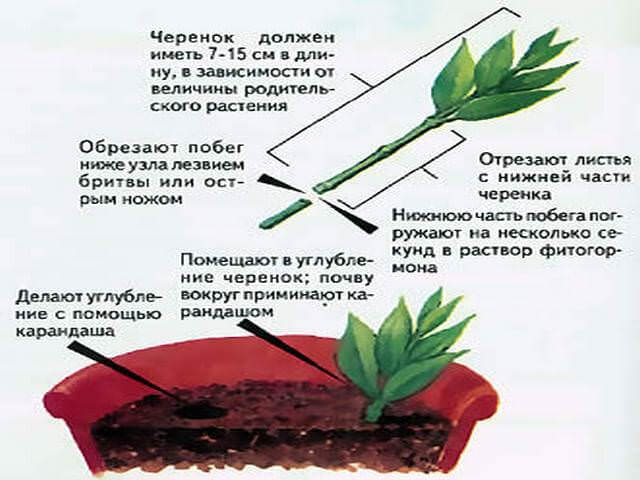

A rooting place is chosen shaded from the scorching sun, but well ventilated. The plantings are covered with glass or a bag to form a greenhouse effect. Periodically, the cuttings are ventilated. They are transferred to a permanent place when the shoots grow.
How to propagate spirea by dividing a bush
Reproduction of spirea, which has reached the age of 3-4 years, can be carried out by dividing the bush. It is difficult to divide older plants in this way without damaging the root system.
You can propagate a perennial by division at any time of the year, but it is better to do this in the fall. Gardeners recommend planning work in early September. At this time, the shrub requires a minimum of maintenance. In summer, it is more difficult to divide it, it is better to do it in cloudy weather or when it is raining.
The spirea is dug up, placed in a bucket of water for several hours, after which it is divided into 2-3 divisions. A sharp pruner is used, which is pre-disinfected. Before planting, the roots of plants are cut and transferred to prepared holes.
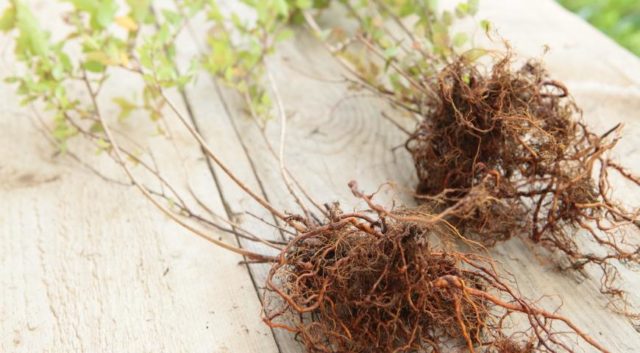

Spirea propagation by seeds
One of the ways to reproduce spirea is to grow seedlings from seeds. This method allows you to get a lot of planting material. Seeds do not require special preparation and stratification. They are harvested in the summer, and in the fall or spring they are planted.
- Seed pods are harvested in late July - early August.
- Dose them for 3 weeks at home.
- For planting, use loose soil, which is filled with containers.
- Seeds are evenly distributed over the soil surface, lightly sprinkled.
- The plantings are well sprayed with a spray bottle and covered with a bag for a greenhouse effect. When shoots appear, the package is removed.
Seedlings dive in a few months, by that time they will reach a height of 2 cm.
- Plants are planted in a box, a distance of 7 cm is left between them.
- After that, the container with seedlings is removed to the garden for the summer so that direct sunlight does not fall on it.
- Young seedlings are watered abundantly, the soil should not dry out, since weak roots will quickly die.
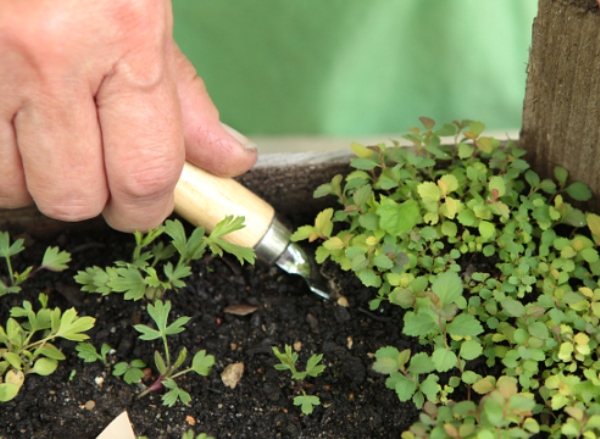

In the fall, the sprouts are transplanted into open ground, where they hibernate. In the spring, plants are assigned a permanent place. The flowering of young bushes will begin after 3 years of cultivation.
How to propagate a spirea bush by layering
If you need to get only a few shoots from the bush, it is most convenient to reproduce the spirea by the diversion method. Work is planned for early spring. They choose the lower shoots, slightly break them, pin them to the ground and cover them with soil.
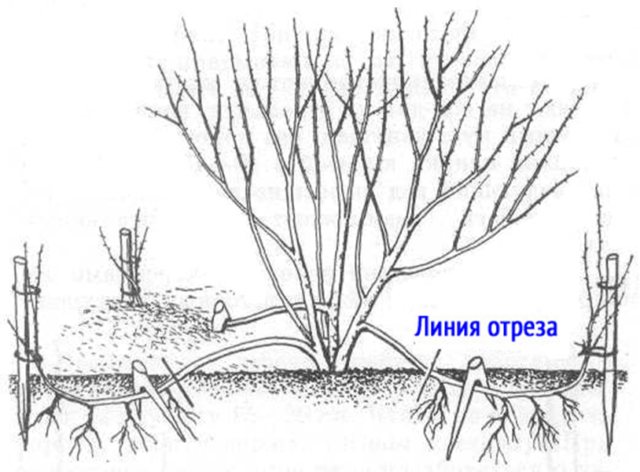

All inflorescences are cut off from the mother bush so that the forces are spent on the formation of roots in young shoots. The soil under the perennial is kept moist. By the end of the season, the cuttings will have formed a good root system, but it is too early to replant them. For the winter, the plants are spud, covered with dry leaves. They are transplanted to a permanent place in the spring.
How to care for garden spireas
In fact, caring for and planting is very important for people looking for a great flowering plant. The best quality can be achieved with properly selected and prepared soil. On barren land, it is unlikely that it will be possible to make a lush and tall shrub.
If you decide to plant a spirea on clay soil, be sure to take care of drainage from rubble, brick or sand - a depth of 15 cm is enough. The plant is not very whimsical to the environment; in a snowy winter it tolerates frost and drought well in spring. Also, spirea is not very susceptible to attacks by harmful insects or diseases.
In the first years of growth, the plant still needs more careful care, namely:
- Moderate humidity should always be maintained - this is the main condition for quick acclimatization of the bushes. Since the roots are not too deep and can dry out during hot times of the day, you need to water without zeal.
- To organize additional protection for the roots and maintain the required level of moisture, the trunk circle is mulched with tree bark or peat.
- Without fertilizers, you will not be able to grow decorative spirea. In the spring she needs a liquid complex of minerals, and in the summer she needs superphosphate.
- For the winter, the branches of the plant are tied and tilted to the ground, covered with dry leaves.
- It is important to carry out pruning - this procedure helps to preserve the beautiful appearance of the ornamental plant. The first pruning can be done in early April. Frozen or dry branches must be cut off.
Cuttings are the most popular method for propagating spirea. Shoots root very well and germinate without any serious conditions. From this we can conclude that even a beginner can propagate the spirea by cuttings in the fall at home on his site.
Shrubs belonging to the genus Spirea (meadowsweet) bloom very beautifully, and that is why they are highly valued by masters of landscape design. It's all about the uniqueness of the plant, which allows you to use itself in different variations: planting in a flower bed, creating a hedge, for decorating borders, as well as rose gardens.There are many types of spirea (gray, Japanese), differing in color and shape of the inflorescence, in the height of the plant and the time when it blooms. Knowing the rules for combining different types, you can amaze others with a visual effect. The flowers have a delicate aroma and are suitable for cutting.
You should know that spirea has a long flowering period. This is especially true for those species that bloom in summer.
Reproduction takes place with the help of seeds or vegetatively: the bush is divided, cuttings and cuttings.
Reproduction process using cuttings
The process of cuttings is considered to be one of the most productive methods of propagation of this plant. Even if you do not use special growth regulators, most types of spirea grow with an acceleration rate of 70%. And if you use the BCI within 16 hours, then you can reach 100%.
To prepare the accelerating substrate, you only need high-moor peat and sand (ratio 1: 2 or 1: 1). You can start the acceleration process in the second half of the summer. But experienced gardeners most often begin breeding in the fall (in September or October), since labor costs are significantly reduced at this time.
You need to start with the fact that among all the cuttings, the strongest shoots should be selected. Then they are cut into several parts so that 4-5 leaves fit along the entire cutting. Only the lowest of them is cut to the root, and the rest are cut to half.
Before planting, they should be soaked for 2-3 hours. If your spirea is a difficult-to-root species, then these cuttings should be processed again in a special IMC solution (mix a liter of water with 1 mg of indolylbutyric acid). And just before planting, you need to apply a powder-like stimulant to the lower part of the root formation. For this you can use "Kornevin".
You need to place the cuttings in the substrate with an inclination of 45 degrees. Thus, the growth of the apical bud will stop, and this will stimulate the formation of roots.
For care, you need to regularly water the plants, and also spray the cuttings with water every day using a spray (if it is very hot, then several times a day). For large-scale cultivation, set up "artificial fog".
To create the necessary level of humidity, you need to make a special shelter for the cuttings using a translucent material.
If cuttings are carried out in winter, then the procedure consists of the same steps, only the cuttings need to be planted in a special greenhouse that shelters from the winter cold.
"Summer" cuttings need to dive next year in the spring, and "winter" ones go to their place in the fall.
A beautiful and spectacular spirea plant has earned respect among people seeking to decorate their personal plot. It takes root well and responds positively to reproduction. The most effective methods are cuttings and division of an adult bush. Rooting is possible in spring, as well as in summer or autumn. How to do it correctly - the recommendations of gardeners and video instructions will tell you.
Landing


A separate hole is dug under each plant or a trench is dug. The width is chosen based on the volume of the root system, usually 50 × 50 cm. It is necessary to dig a depression in advance so that the pit dries out and ventilates. The depth of the hole is made 50 cm. The plant is lowered into it so that the root collar is at the level of the soil surface. Prepare a mixture for falling asleep in the pit:
- sand;
- land;
- peat.
The proportions are 1: 2: 1. It is necessary to straighten the roots in the hole and then cover with soil mixture. Loosely trample the ground around the bush and mulch with peat. It is preferable to carry out garden work in autumn, September, early October. Transplanting spirea in the fall will allow the plant to harden before the onset of frost.
Reproduction
The spirea plant is very convenient and unpretentious, reproduction is carried out in several ways: by cuttings, shoots and seeds, and the latter option is not suitable for hybrid plants, since seeds do not appear on them or do not have signs of a mother bush.
Spring is the best time to plant seeds. They are buried in high moor peat and are well moistened. Germination will take 10 days. Further, they are subjected to a pick when they are transplanted with a spirea in open ground, cloudy weather or evening is needed. Provides mulching and regular watering.For a year, spirea can grow up to 10 cm in height. The first flowering can be expected at 3 years of plant life.
For the propagation of spirea by cuttings, woody shoots or very young ones are used - green. For spirea blooming in spring, cuttings are used in June, and summer plants in July. For the development of the root system, the cutting is well watered and kept in conditions of high humidity. Spring and the first leaves are the time for breeding by branch. The lower branches are bent to the ground, pinned with a wire bracket and sprinkled with soil. Regular watering will ensure good rooting and independent shrubs will form in the spring. Sprinkle with dry foliage for the winter.
Spirea looks great in picturesque compositions and is rightfully popular among gardeners and landscape designers. The lush flowering shrubs are eye-catching and pleasing to the eye.
Green cuttings of spirea - video
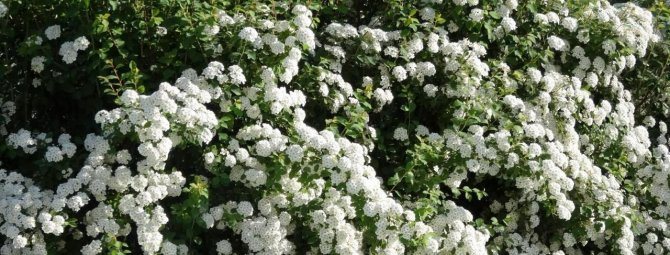

- Kind: flowering
- Full-bloom Period: May, June, July, August, September
- Height: 15-25cm
- Color: white, pink, red
- Perennial
- Hibernates
- Sun-loving
- Moisture-loving
Read also Cornflowers in landscape design photo
Spirea is rightfully considered one of the most beautiful shrubs. It is widely used to decorate the local area. It is unpretentious, resistant to winter frosts. There are usually no problems with planting and caring for the plant. This genus of ornamental shrubs has about 90 species, each of which can be an excellent decoration of the site during the flowering season. Spirea is planted in well-clarified places, the soil is fertilized. What are the most popular types of spirea? How to plan a landing site? How to properly care for a plant? What problems can an amateur gardener face?
Spirea - fluffy clouds in the garden. Planting, care, description, types
Spirea is a shrub that attracts attention with its lush flowering, spectacular color of leaves and inflorescences, the size and size of the bush, as well as unpretentiousness and endurance, this plant can be used in any type of landscaping. But in order for the spirea to show all its decorative "capabilities", you need to know some details of caring for it... Let's get to know them.
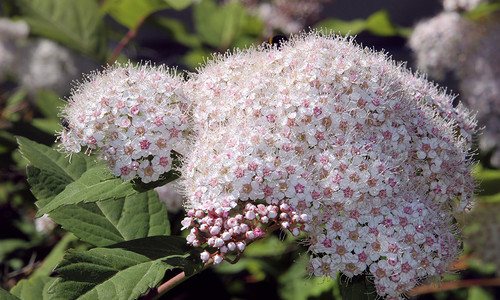

Content
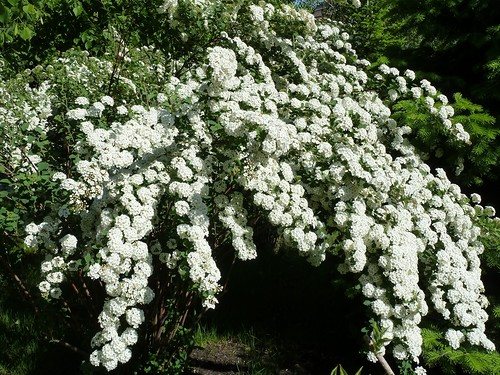

Spirea: how to keep a plant in winter
Spirea for the winter, despite the fact that it is a winter-hardy plant, must be covered. The soil in the near-trunk circle is well loosened, removing weeds. There is no need to cover the entire bush, but the root system needs to be insulated. In this case, peat or sawdust is used, which is poured in a 20-centimeter layer; spruce branches can be laid on top. Freshly planted plants should be insulated especially well.
Spiraea is easy to grow in the Urals. This plant does not require special care, tolerates low temperatures well and blooms beautifully. In landscape design, spirea is used to create living fences, curbs, it is beautiful in a single planting and among low-growing decorative conifers.
The right time
Spring is considered the best time for propagation of spirea by cuttings. However, some plant varieties may have different propagation times. For example, those varieties that bloom in spring are best propagated in summer. You can also breed a shrub in the fall.
Regardless of the time of the year, it is recommended to also take into account the weather conditions. It is recommended to harvest shoots in rainy and cloudy weather. If reproduction is carried out in the spring, then it is advisable to wait for the cessation of active growth of greenery on the bushes or, conversely, to harvest the cuttings before the buds begin to swell. When breeding in the summer, it is important that the weather is not hot and dry, otherwise the cuttings may not take root, and it is also important that the spirea does not bloom during the breeding season.


If breeding is planned in the fall, then you need to be in time before the onset of frost. Branches are harvested in September, and rooting and planting in open ground must be carried out before early October. It will be important to insulate well with spirea for the winter. Otherwise, the process of breeding a shrub is practically the same regardless of the season.
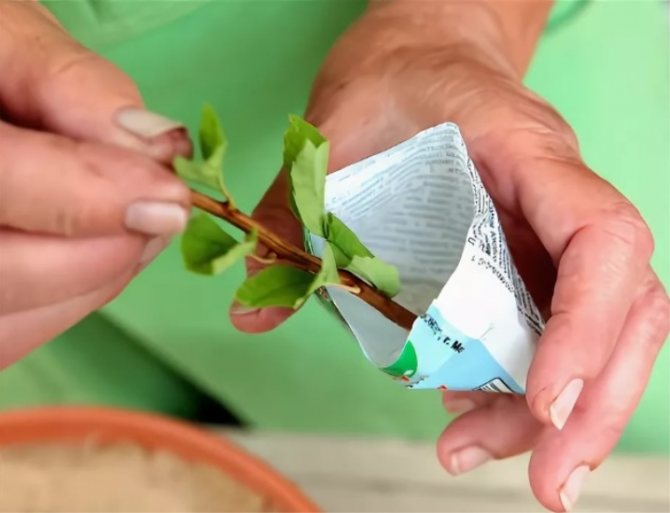

Spirea pests and diseases caused by them
Most often, Japanese spirea is affected by spider mites. The disease manifests itself in the appearance of whitish spots on the leaves, their subsequent yellowing and falling off. To kill the tick, it is recommended to treat plants with 0.2% solution of phosphamide or acrex. Significant damage can be inflicted on the plant by the aphids feeding on its juices and the rose budworm. In these cases, the bushes are best treated with bitoxibacillin and pyrimor preparations. You can also use 0.1% actellic or 0.2% etaphos. A good effect is given by spraying plants in dry weather with water and herbal infusions, strengthening them with regular feeding and timely watering.


Spiraea Japanese on the backyard brings bright colors and shapes, allows you to diversify the landscape using unusual topiary figures from trimmed bushes, create a beautiful border or fill the free space with beautiful, eye-catching single specimens of plants. Admiring this decorative culture, you can ensure a positive attitude and good health, and bouquets made using its inflorescences will be a great addition to the interior of any room.
Varieties of spirea, varieties and hybrids
Spirea (lat. Spiraea) includes up to 100 species, each of which has its own name. Rarely, but you can hear or read another name - meadowsweet, whose origins stretch from ancient Russia. Spirea varieties are very diverse in shape, color and even leaf shape. The shrub belongs to perennial plants, so every year you can observe how the spirea grows and becomes more lush.
Spirea is unpretentious to care for, sometimes due to weather conditions due to a lack of light and heat it grows with fewer flowers, but it invariably remains beautiful. There are spring-flowering and summer-flowering spireas. In spring flowers, the flowers are predominantly white, they are formed on the shoots of the second year, in the month of May the bush becomes covered with beautiful inflorescences:
oak-leaved spirea is a weeping bush, can grow up to two meters and bloom earlier than other varieties, after May 10-15. The shrub is completely covered with flowers;
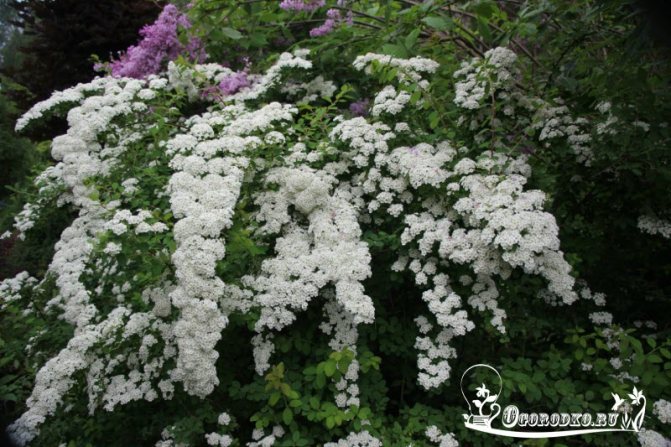

spirea Arguta (sharp-serrated) begins to bloom in the last days of May. The shrub has narrow leaves, drooping branches, grows up to 1.5-2 m in height;


spirea gray (ashy), often referred to as the bride. It is distinguished by its splendor, pubescent leaves of a grayish-green hue, small and white flowers. The abundance and splendor of flowers is simply mesmerizing.
A fairly large number of shrubs belong to spring flowering, among them the Nipponskaya spirea stands out. It is a small shrub (up to 1 m), in the shape of a ball, blooms closer to June. Another representative of the spirea Wangutta is a vigorous plant (2.3-2.5 m) with long flexible shoots, gray green leaves. Flowering begins in the second half of June. Summer spirea is mostly pink in color and blooms in June or July, depending on the characteristics of the variety. This group includes Japanese spirea, which has many subspecies and varieties. The most common and famous are Nana, Little Princesses, Darts Red, Shirobana, and others.
Pests and diseases
Usually spiraea is affected by a standard set of pests (aphids, rosaceous miner, rose leafworm, spider mite) to combat which various measures are used - agrotechnical, chemical, biological. Particular attention should be paid to prevention. Healthy and well-groomed plants are less susceptible to attacks from various insects.
Three times treatment with ammonia water with an interval of two weeks, starting from the moment the leaves bloom, will help scare away unexpected guests and increase the spirea's resistance to disease. Such processing will give an additional impetus to the growth of the vegetative mass, serving as a kind of foliar feeding. Timely weeding and watering play an important role. Spirea is quite resistant to diseases.
In the design of gardens and parks, spirea is simply irreplaceable. It is distinguished by a wide variety of varieties, does not oppress other plants, and tolerates pruning excellently. Looks great in any garden. Perfectly complements the composition of low trees and shrubs. Serves as an excellent screen for larger brethren with bare trunks.
A spirea bush sprinkled with flowers on a green lawn looks spectacular. She is unusually attractive in a rocky garden in the company of short conifers. It is indispensable for creating a hedge, as it is an inexpensive planting material and is easy to form. It is very decorative in the period of autumn leaf coloring, enlivening the wilting nature.
Description of spirea
Among the plants of this genus, you can find both dwarf varieties, the height of which does not exceed 15 centimeters, and real giants, with a crown radius of 2.5 meters. The root system of an ornamental shrub is fibrous and shallow. Branches outstretched or lying, erect or creeping. Leaves of a characteristic green color are rounded or lanceolate.
Flowers in inflorescences are small pyramidal shapes... The color of flowers can vary from crimson to snow-white. Note that in various types of spirea, inflorescences can be located both at the top of the shoot and throughout the stem. Reproduction of an ornamental shrub is possible by cuttings, layering, seeds, or by dividing the mother bush.
These ornamental plants are versatile in use, so they can be planted to form a hedge, single or group planting. Macrophil dwarf varieties are an excellent choice for living carpets, rocky gardens and rockeries. But we can recommend planting large varieties one by one, which will make it possible to perfectly decorate the backyard of a private house.
Is it difficult to propagate and grow spirea
In fact, it is not difficult to propagate spirea by cuttings in the fall. The plant is quite hardy and does well in any climate. To buy a spirea for your site, just go to any gardening store. Most often it is bought in the fall. Depending on the variety, it has a different height. You need to immediately find out from the seller so that in the future you do not make a mistake when choosing a landing site. The plant is great for landscape decoration, with its help you can beautifully decorate the border of the site, the spirea is often used as a hedging tool and when planting perennial gardens.
When and how to harvest cuttings?
Spirea is an ornamental shrub, represented by many unpretentious varieties of different heights and shades from white to deep red. The perennial reproduces successfully both by seed and vegetative methods. The advantage of the latter method is the preservation of all varietal characteristics of the parent plant. Any hybrid of a spirea can be propagated by cuttings, while seed propagation is used only for specific spiraea. Reproduction can be carried out throughout the growing season until autumn.


When breeding spirea in the spring, it is better to wait until the active growth of the green mass stops. At this time of the year, it is recommended to take last year's lignified brown shoots. If the species is summer flowering, then you will have to wait until early or mid-June.
The highest percentage of rooting is observed in twigs taken in summer after flowering. Take green shoots of the current year.
It is better to collect blanks in cloudy or rainy weather. Twigs are taken only from a healthy bush. They should grow straight up, so the new bush will take on the correct crown shape. If the mother plant is damaged by a pest, it is treated with special preparations until it recovers completely. After treatment, at least three days must pass before collection. Simultaneously with the spirea, you can organize the propagation of hydrangea by cuttings, as well as forsythia and weigela.
Cuttings from last year begin to root in September. In autumn, this must be done before October, so they will have time to take root before the onset of winter. The advantage of autumn propagation is the minimum of care for seedlings in winter. At home, in spring and summer, cuttings require frequent watering and spraying, in winter they have enough snow on the site.
Appearance and biological features
Plants of this genus can grow both small (up to 15 cm) and tall (up to 2.5 m). The branches of the shrub are erect or creeping. The color ranges from light to dark brown. The roots are shallow, fibrous. During flowering, the spirea is covered with numerous small flowers in inflorescences of various shapes. The color of the petals is from snow-white to crimson. Spirea inflorescences can be located both along the entire shoot, and on its upper part or at the end of a branch. The plant propagates by seeds, cuttings, dividing the bush, layering.
Spirea does not need pruning. It is carried out exclusively for decorative purposes in order to give the bushes a more aesthetic appearance. The crown of a plant can be dense and dense or slightly "sparse", but it always looks attractive. The branches bloom right down to the ground, so there is no unsightly "bare feet" effect.
The shrub is hardy, adapts well to various climatic conditions, so it can be grown not only in the south or in the middle lane, but also in the northern regions. If the spirea freezes under severe frosts, then after pruning it completely recovers and blooms in the same year. For the normal development of the plant, a few hours a day of direct sun, top dressing, and good soil are enough. You don't need to cover it for the winter.
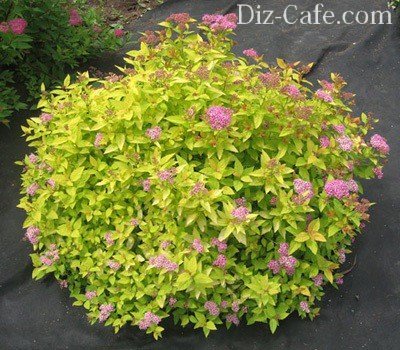

Spirea blooms on shoots that grow during the same year, so pruning does not spoil its appearance
Spirea in landscape design
The plant has many varieties, very different from each other not only in flowers, but also in height. This helps to use spirea in almost all areas of the garden. Decor ideas can be like this:
- Planting low-growing shrubs along paths, summer cottages, as well as between different parts of the site to emphasize its contours.
- Planting large, spreading trees along the borders of the garden to create the effect of a green fence.
- Solitary (separate) planting of large trees on lawns, elevated areas and in the corners of the garden.
- Planting small (up to half a meter high) bushes in rockeries among other plants.
Care, feeding and watering
The plant is unpretentious, care is not difficult, almost minimal. Avoid overgrowing of young plantations with weeds. Break up the crust formed after watering as needed.


In early spring, fertilize on depleted soils with a full set of fertilizers. On light chernozem soils, the need for feeding is no longer necessary. Before flowering, it is recommended to fertilize with phosphorus - potassium fertilizers. This will increase the flowering time. This spirea will bloom more abundantly.
Watering is carried out during particularly dry periods.
Spirea, planting and care according to all the rules!


Spirea, planting and caring for which is not difficult, can be planted and grown without unnecessary trouble, so the shrub is of great interest and attention for many gardeners. The plant does not require undue attention, but it blooms very beautifully, which is why it is so fond of many summer residents.To grow a gorgeous shrub, you first need to learn the biological characteristics and cultivation techniques ...
Pruning and preparing cuttings
For cuttings, spireas are cut straight-growing young shoots.
Reproduction of spirea by green cuttings in spring occurs in several stages, which are carried out in a certain sequence:
- 1. Cuttings are cut into 10-15 cm, but so that each has at least 4 leaves.
- 2. The bottom cut should be done not with a pruner, but with a sharp knife at an angle of 30 degrees, which will help increase the surface area for root formation.
- 3. The lower 2 leaves should be cut with the petioles, and the upper leaves should be cut in half, this will reduce moisture evaporation and accelerate the rooting process.
- 4. Dip the prepared cuttings in a solution or powder with any root-forming powder (Kornevin, Heteroauxin, Grandis), but this is not a prerequisite.
- 5. Plant the resulting planting material in containers with prepared soil.
For spring cuttings of spirea, shoots that bloom or already have clearly defined flower buds should not be cut off.
Rooting in the sand, a jar of water, on the site
The rooting rate of this perennial is high - up to 70%. If you use root growth stimulants, then the survival rate of the branches increases to 100%.
Preparation for rooting:
- All upper parts of the branches must be cut off. On a workpiece, the length of which is 15-20 cm, 4-5 leaves should remain.
- All the lower leaves are removed, and the upper ones are shortened to half. This will reduce moisture evaporation.
- From the bottom of the branch, make an oblique cut.
- Before planting, the workpieces are sent to the root formation stimulator solution for 10-12 hours. The drug Epin (1 ml per 2 liters of water) is suitable.


Growing sequence from blanks - For a better result, the cut is additionally treated with a powder root growth stimulant, for example, Kornevin.
The easiest way to root a spirea is to place the cutting in water, but this method makes the plant less resistant to adverse conditions. Cuttings become brittle, can quickly rot. Experienced gardeners prepare sand or a special substrate for planting.
You can root the cutting in wet sand, deepening it by 2-3 cm. It is placed at a slight angle to ensure enhanced growth of the root system by inhibiting the development of the upper bud.
You can plant blanks immediately on the site. For this, a substrate is prepared from sand and peat, taken in equal proportions. Planting rules are the same as for growing in sand.
It is not so difficult to care for small seedlings before transplanting into open ground. There are several rules:
- The container is covered with a film or a transparent lid to create a greenhouse. A plastic bottle and glass jar will work.
- Every 2-3 days, the shelter is removed and sprayed.
- The pots are placed on a windowsill with diffused lighting. Another option is to dig a pot in the garden and cover it with leaves and spruce branches. In the spring, with the appearance of new roots, the plant is transplanted to a permanent place of residence.
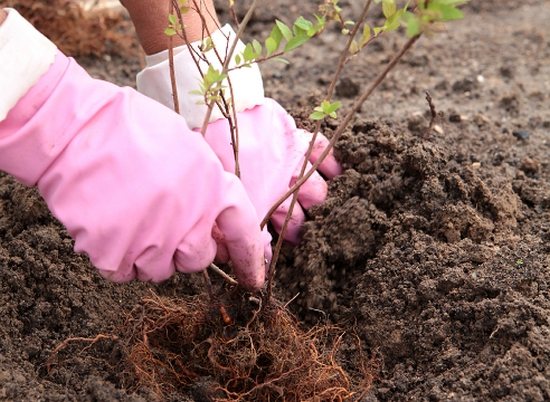

Landing in open ground





